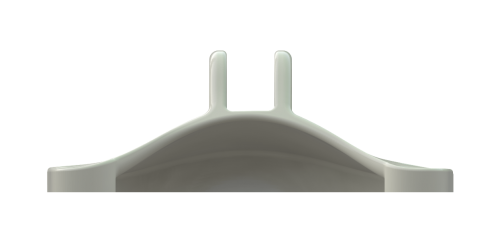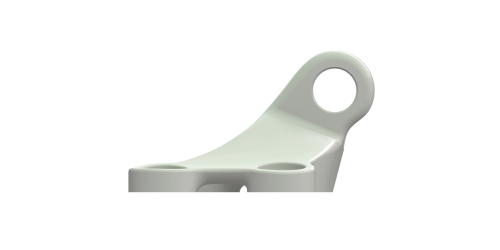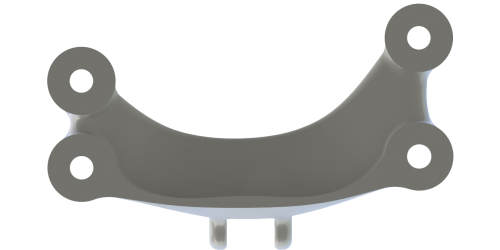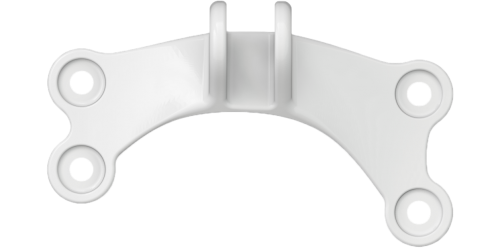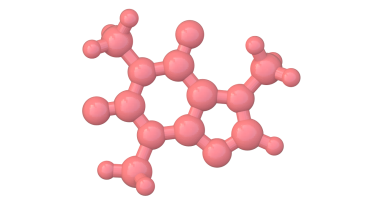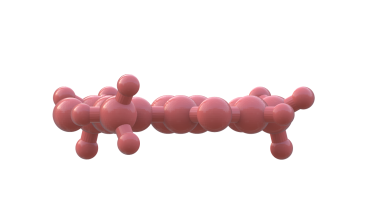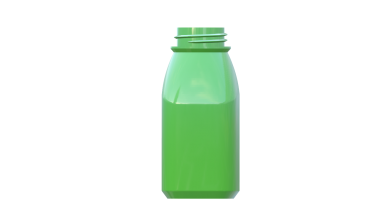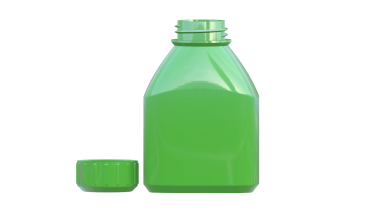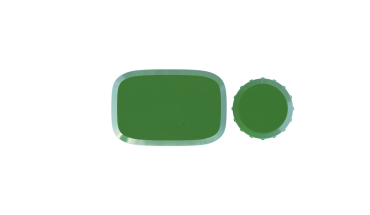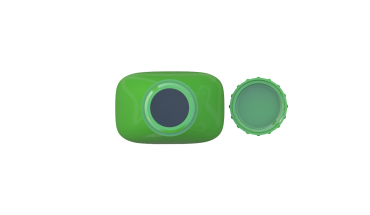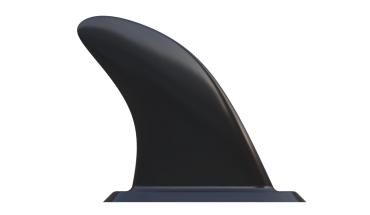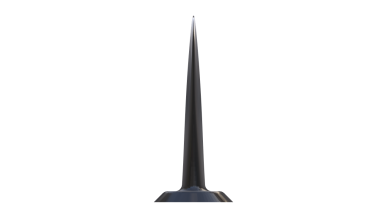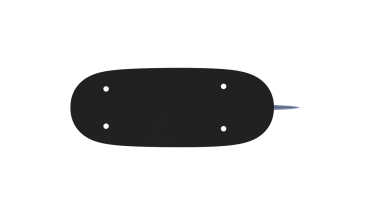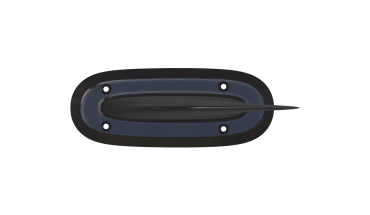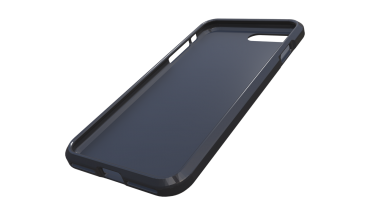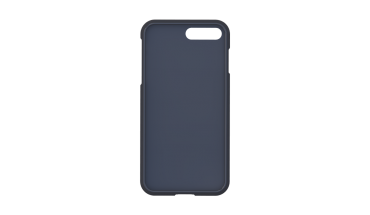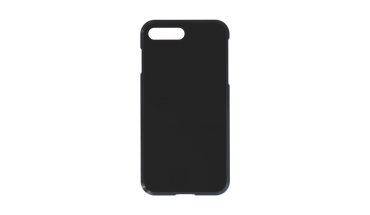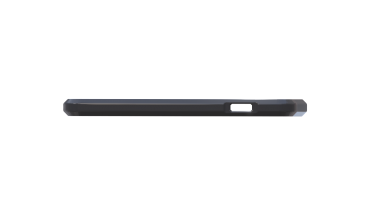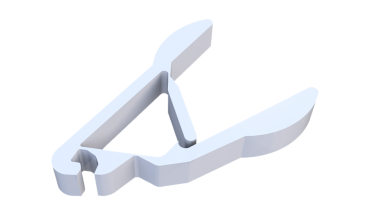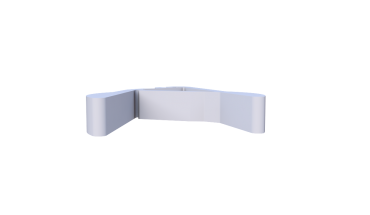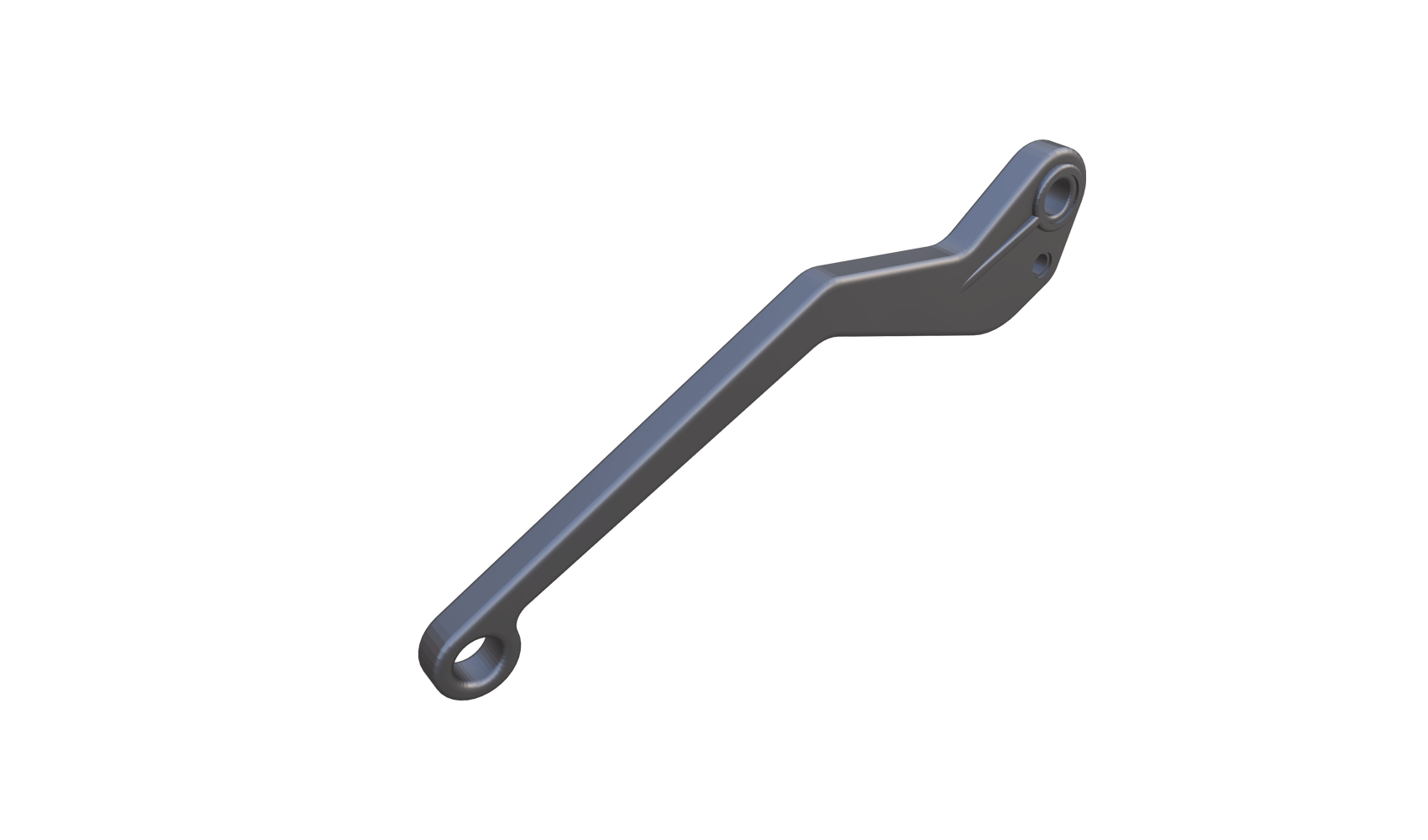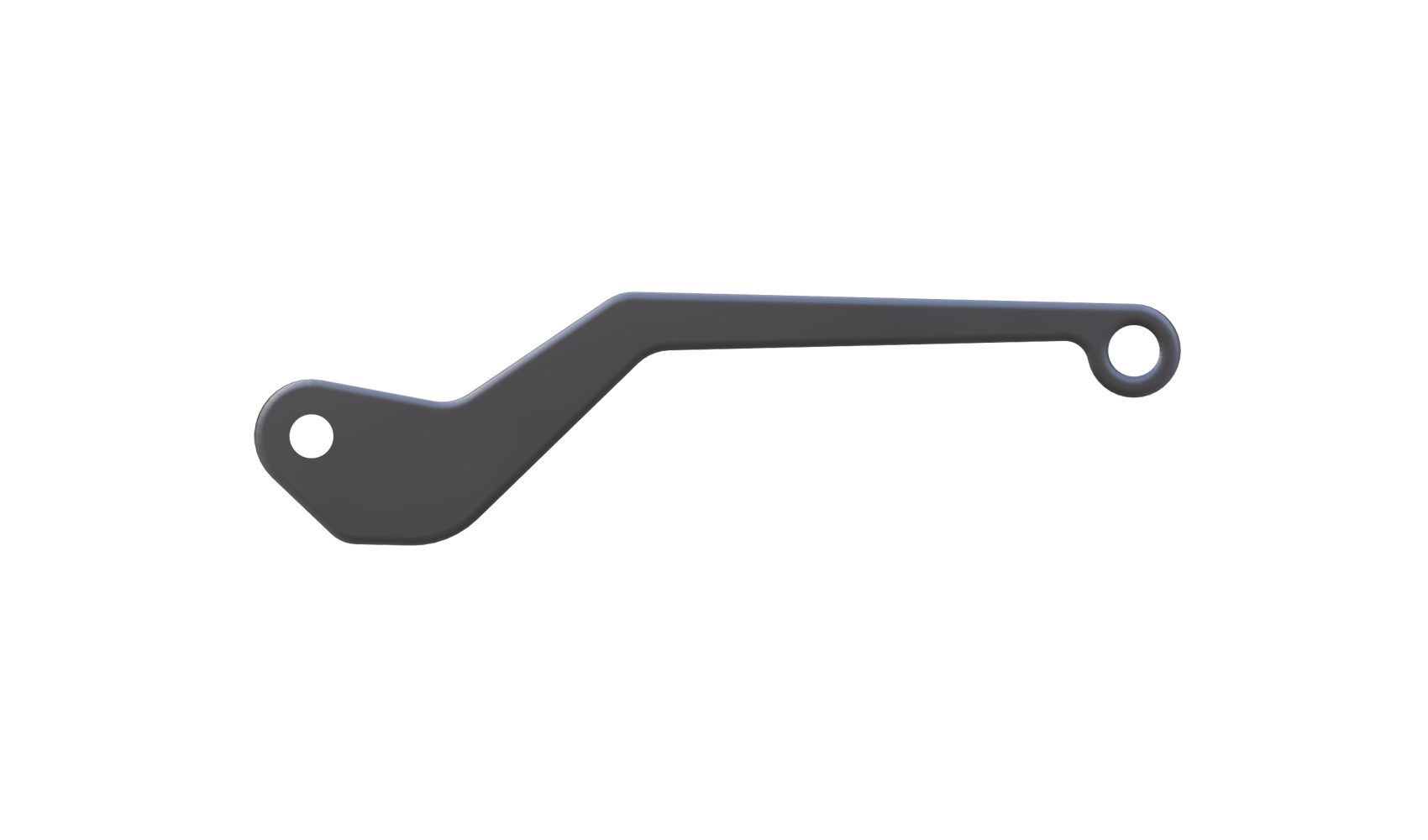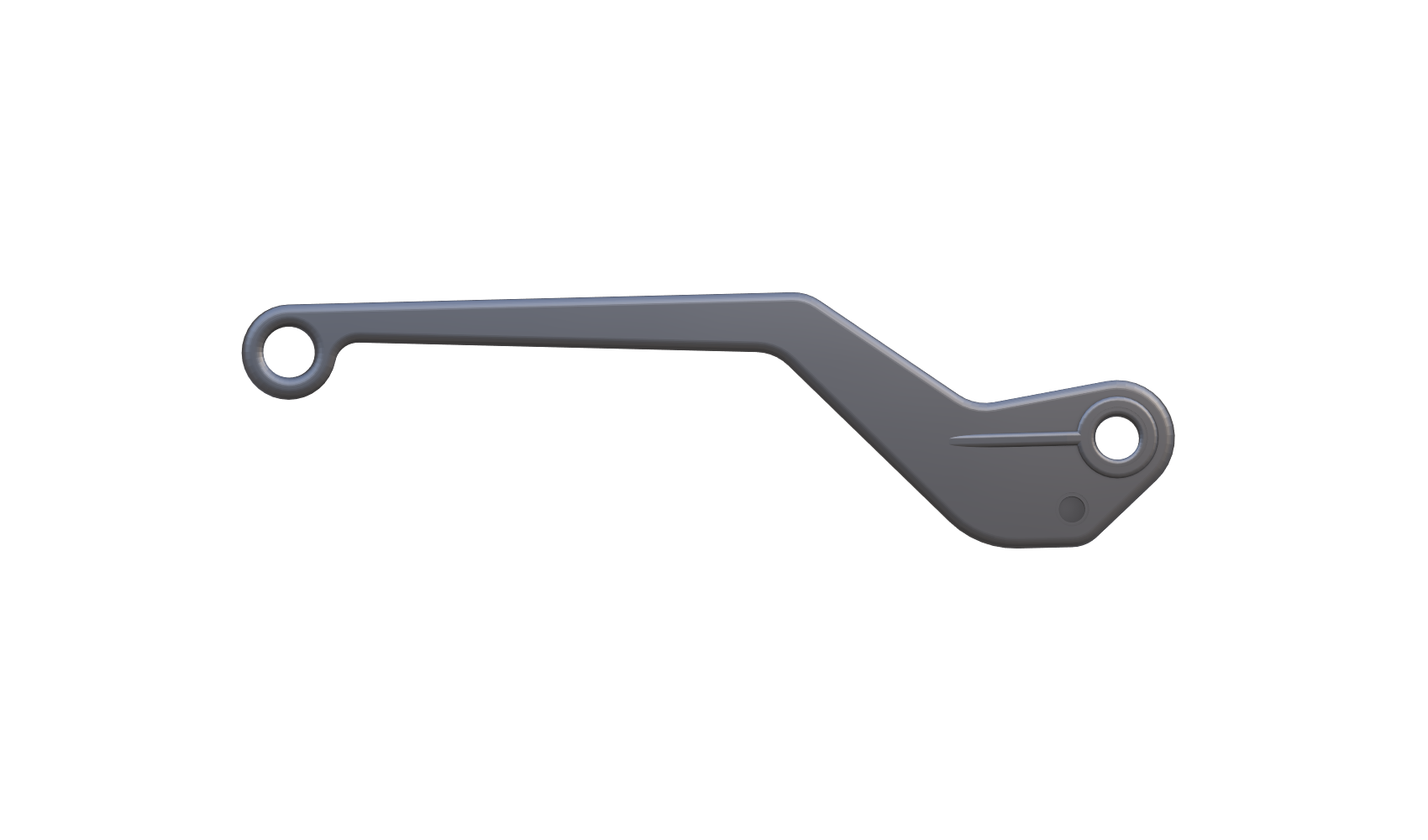WHITEPAPER
3D Printer
Filament Types

B.Diallo
Signup or download the pdf version to get notified when we publish the latest guides.
Share on facebook
Share on twitter
Share on linkedin
INTRODUCTION
The purpose of this guide is to introduce the different 3D printer filament types that are available and their uses. This can range from producing visual prototypes in industries such as design to helping you pick the right filament when you need to make functional prototypes.The guide is designed to be easy and clear with minimum complexity so it can be quickly referenced when needed.
Currently we offer 8 standard filaments which are Engineering PLA, ABS filament , PETG filament , NYLON , a carbon fibre filament composite, PVA, HIPS , Flexible filament (TPU) and Polypropylene. However, due to the implementation of the market leading E3D hot-ends, the Bolt Pro can feasibly print with all current filaments in the market.
The guide will outline the unique characteristics of each filament, including specifications, the mechanical properties of each and how they are used depending on their use case.
The best 3D printer filament in the market is highly dependent on what the application is and each 3D printing material has its own advantages and disadvantages which we will explore in this guide. The main purposes is to have a simple guide to inform users what each filament is capable of and how best to maximise those attributes to achieve better 3D prints.
The guide is intended to be kept up to date to with any developments that occur and we recommend signing up to the white-paper newsletter so we can update you as developments occur.
3D PRINTING GLOSSARY OF KEY TERMS
MATERIAL COMBINATION MATRIX
The great advantage of the Bolt Pro 3D printer is it comes with dual independent extruders (IDEX). This means that users have the option of combining two materials to use one as a support or to use different colours of the same material to create unique models.
However, each 3D printing material has unique material properties and these become increasingly important when attempting to combine two different types of filaments.
The matrix below highlights which combinations work well with each other and which 3D printer filament types do not work together and which materials that can be used as breakaway support.
DISTINGUISHING FEATURES EACH 3D PRINTER FILAMENT TYPES
EPLA FILAMENT
Aesthetics : Engineering PLA filament can create great visual prototypes with the added option of post processing such as painting or being able to be sanded to create great models.
Ease of use: Engineering PLA is the easiest material to work with that does not have unique work-flow requirements.
ABS FILAMENT
Heat resistant : ABS has got high heat resistant properties which is useful for functional prototypes
Wear resistant: ABS models do not scratch easily and can last long if stored properly.
High Elasticity: Very flexible and can stretch.
PETG FILAMENT
UV Resistant : Many models degrade if left out in direct sunlight, PETG is the main exception in 3D printing.
Water Resistant : PETG models can be used to store liquids or be submerged without degrading.
PP FILAMENT
Chemical Resistant : PP is highly resistant to chemicals and cannot be combined to anything apart from itself.
Fatigue Resistant : PP models do not break easy from repeated flexural forces.
CARBON FIBRE FILAMENT
High Strength : Carbon is added to a base filament to increase strength and rigidity in the final model.
NYLON FILAMENT
Low Friction : Great for models that require movement without degrading.
FLEX FILAMENT
Elasticity: Elastic parts like phone cases and grips can be made with flex
HIPS FILAMENT
Soluble material : HIPS dissolves in citric based acids.
Impact Resistant : HIPS is highlight impact resistant and can withstand forces for various functional applications.
PVA
Soluble Support Material : PVA dissolves in water and is used for complex geometric models.
ENGINEERING PLA FILAMENT
Engineering PLA is a version of PLA filament formulated to have higher mechanical properties like strength than standard PLA. It is catered to the high demands of current 3D printing industries that need a filament that is both easy to use, sticks well to the print bed and still has the ability to print high-quality prints without much hassle. We highly recommend Engineering PLA for new 3D printing users due to its high predictability when in use.
Material Properties
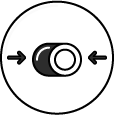
Strength
Engineering PLA strength is greater than the standard PLA and has great impact resistance for many use cases. Users can create great models and use EPLA to create tooling easily for their enterprise.

Ease
Engineering PLA has a low melting temperature and can benefit aesthetically from active cooling. This makes it a great filament to start with since it isn’t prone to warping like ABS.

Accuracy
EPLA is not prone to warping or cracking like other filaments, therefore tolerances are easier to achieve in comparison to other filaments.

Biodegradable
EPLA is derived from natural sources such as sugar-cane or corn. This makes it biodegradable and will degrade within 6-12 months if it is discarded.

Disadvantage
EPLA has some degradation issues where the colour fades as time passes, especially if it is exposed to direct sunlight.

Disadvantage
EPLA does not have much heat resistant properties and it begins to soften at 60ºC.
Spool Information
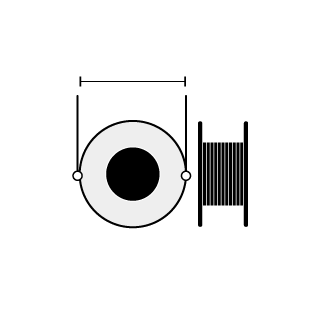
200 mm
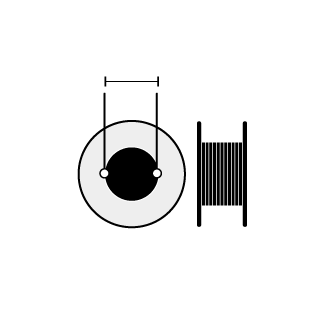
52 mm
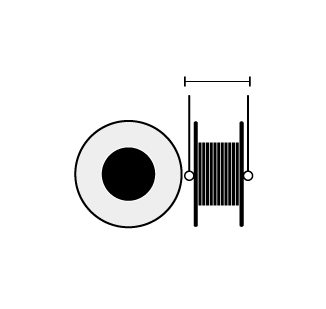
54 mm

3 mm
Filament Information

1.75 mm( ± 2%)
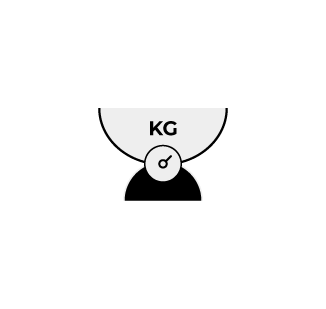
750 g

168 m
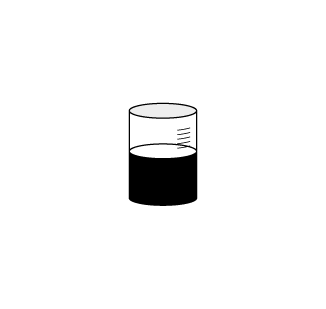
1.27 g/cm³
PRINTING CHECKLIST
Temperature
±210 ºC
Temperature management is key with any print object. If the temperature is too high then the printing process will include a lot of oozing and mess. If instead, prints are not adhering to the bed and you are getting blobs, then the temperature may be too low.
Bed Adhesion
Temperature
±40 ºC
Engineering PLA adheres to the print surface easily. It is one of the few filaments that does so . It doesn’t require a heated bed but it is recommended due to it helping to stabilise the temperature evenly. This is very key in the early stages of the printing process. EPLA doesn’t require a heated bed but it is recommended to
use one at temperatures between 40-60 ºC.
Bed
Adhesion
Options

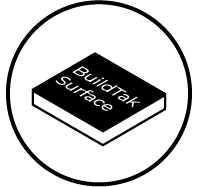
Moisture & Storage
EPLA is not highly hygroscopic and does not require specialised storage set-ups and can be stored in is original filament box, ideally in a sealed bag with a moisture desiccant.
Drying before Printing
EPLA can be dried in an oven if it is not stored properly at a maximum temperature of 50 ºC for 6-12 hours.
Cooling
Cooling works well for EPLA prints because it is less likely to warp significantly in comparison to other filaments.
Your First Layers
EPLA has good inter layer bonding meaning that layer height adjustments mainly affect the aesthetics of the model.
Speeds
There are a number of printing speeds that can be adjusted for the printing process with EPLA which will reduce lead times but can reduce print quality. After gaining experience, this can help you determine how to achieve the desired results at a shorter time frame.
Skirt / Brim
Not required, but helps to reduce issues for larger
parts.
Support
Material
PVA or Breakaway
Priming Pillar
Used when printing with scaffold or dual colour models.
INDUSTRY EXAMPLE PRINT
Aircraft Bracket 3D Model
Engineering PLA parts are a great way to test out the aesthetics of a part. Once printed, parts can be easily painted to create parts with good tolerances to check fit and form for any project.
The part seen here is a topology optimised bracket for a aircraft which was printed using a breakaway support that was easily removed with a pair of pliers.
Engineering PLA has also great dimensional accuracy to test out various designs and how they can fit together to create a final product. It is easy to print and users can create many parts quickly using mirror mode on the Bolt Pro which can print two parts at once.
3D MODEL
FINAL PRINT
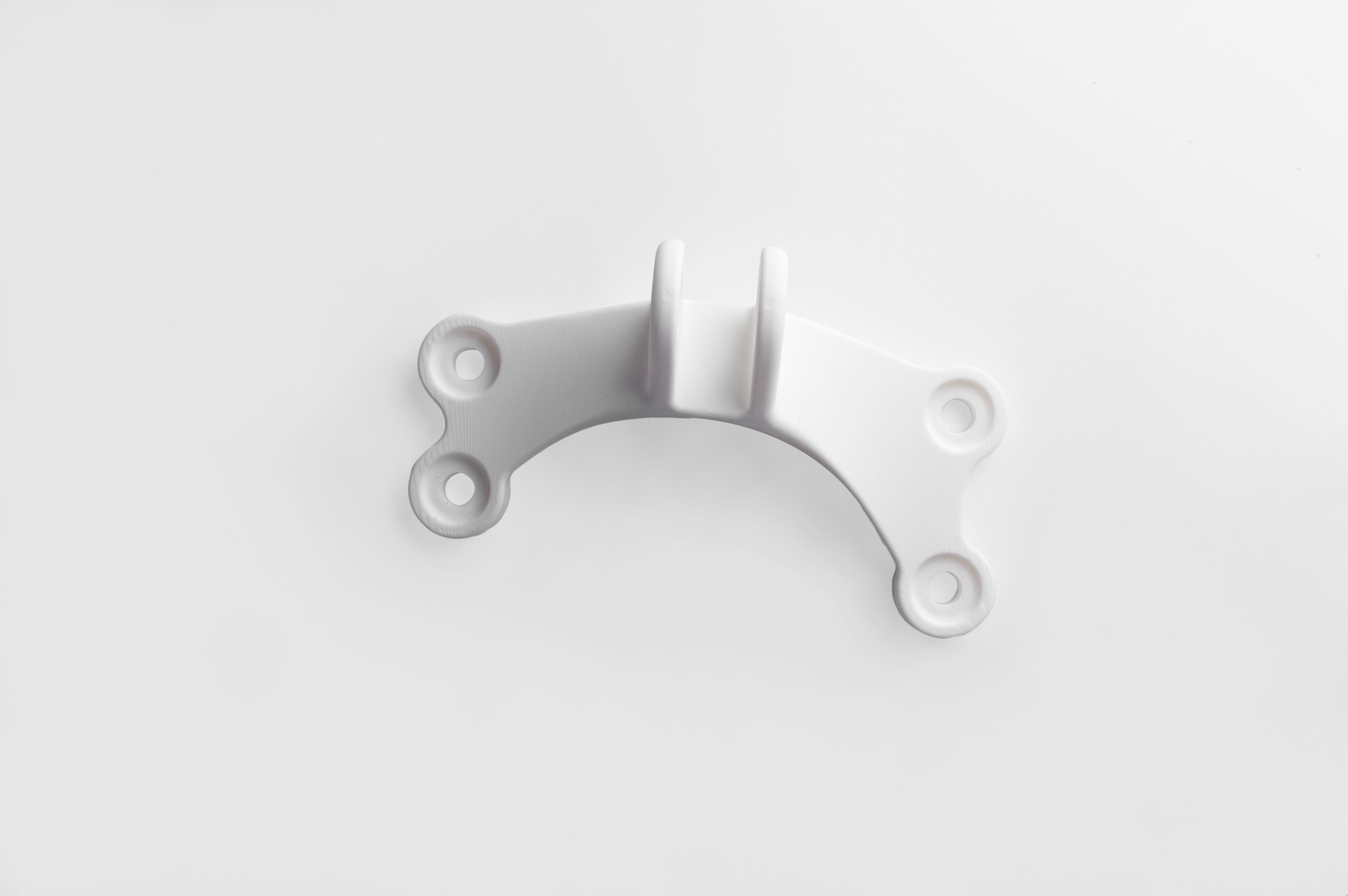
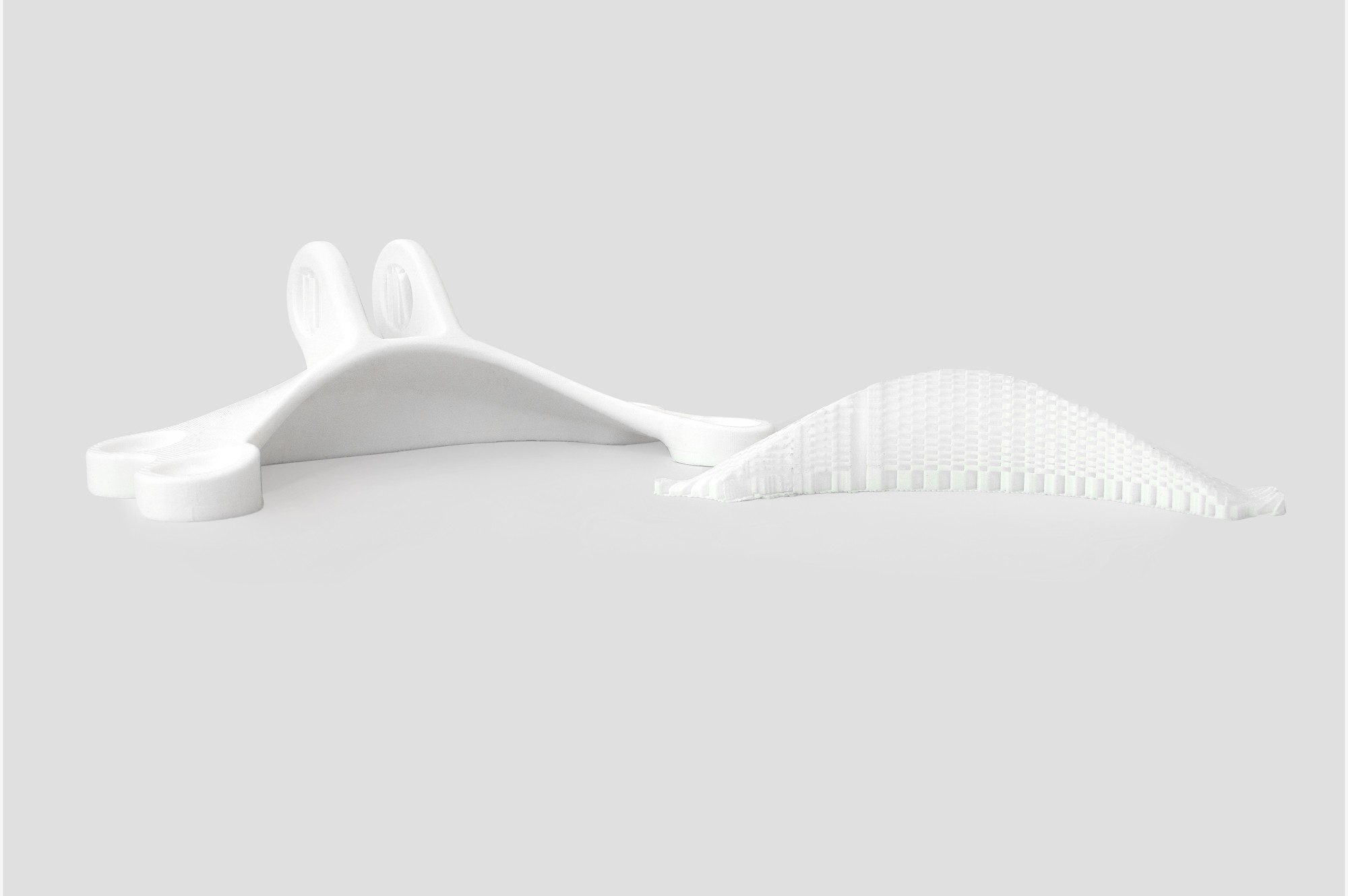
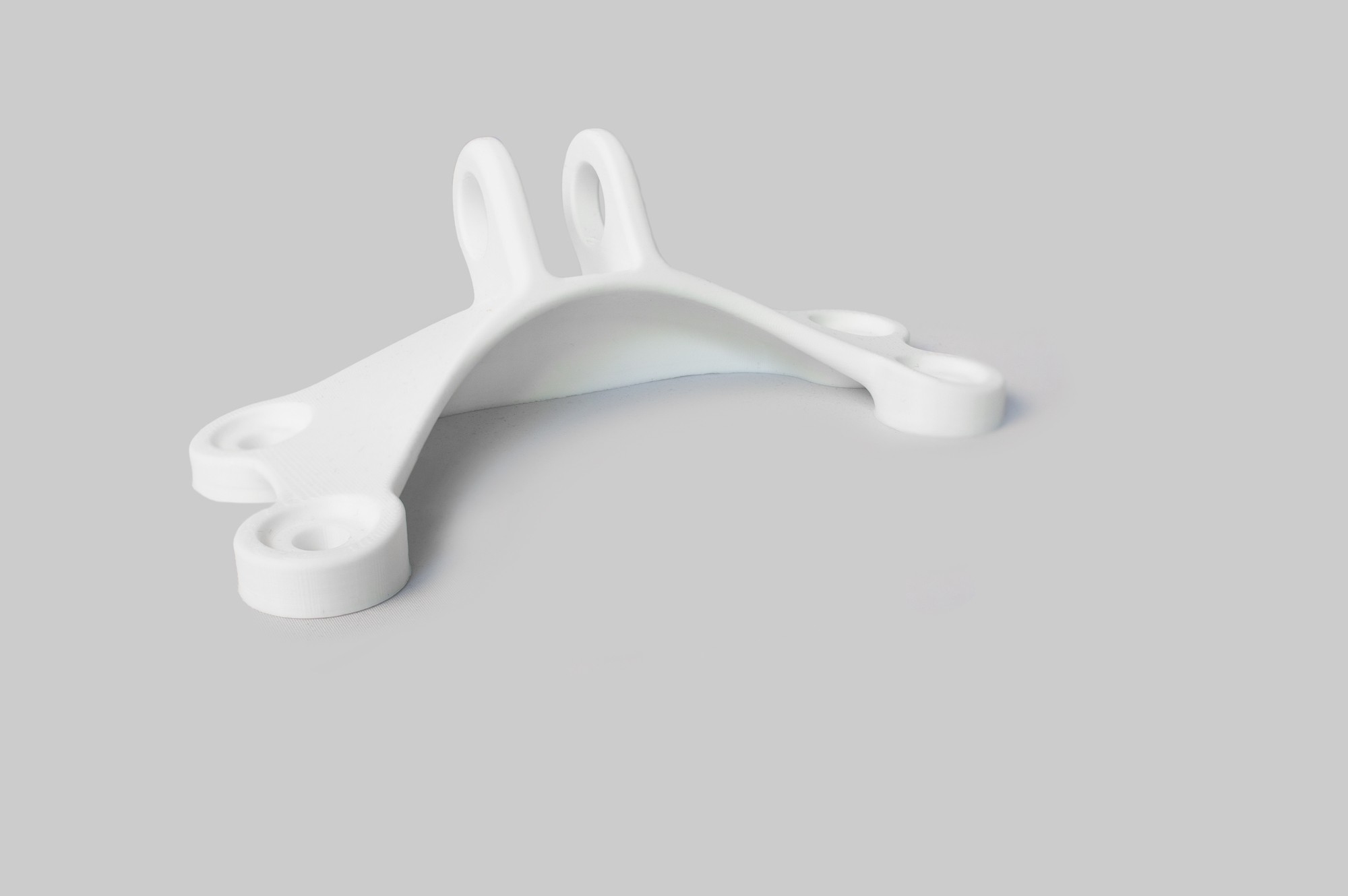
ABS FILAMENT
ABS filament is widely used already in standard manufacturing and this is due to it being highly durable and with the benefit of great strength. It is used to create visual prototypes, functional prototypes, tooling and also moulds that can be burnt away.
Although popular, ABS does have some caveats that need to be taken into consideration. It produces fumes when melted and needs to be enclosed during the printing process. Additionally, it is highly prone to warping due to high shrinkage during cooling and requires a heated print bed.
Material Properties

Strength
ABS offers great strength for parts and is often used to create tooling. It is more durable than EPLA and is often chosen because of this despite it having more stringent print settings.

Heat Resistant
Another desired property that ABS offers is it is highly heat resistant, which makes it ideal for a wide range of engineering needs.

Impact Resistant
ABS offers parts that are less brittle than EPLA parts. It is slightly more ductile, which creates parts that can withstand high impact situations.

Rigid
ABS printed parts are also highly rigid and do not bend easily. This property compounded with its strength properties means that parts can withstand stresses far more than EPLA.

Disadvantage
ABS can warp significantly during the printing process. This is especially pronounced at the edges of your model as some areas cool faster than others which can pull the model of the print bed. This can be mitigated with proper adhesion techniques.

Disadvantage
Due to shrinkage, ABS has lower dimensional accuracy in comparison to EPLA or HIPS for example.
Material Specifications
Spool Information

200 mm

52 mm

54 mm

3 mm
Filament Information

1.75 mm( ± 2%)

750 g

200 m

1.04 g/cm³
PRINTING CHECKLIST
Extrusion
Temperature
±230 ºC
ABS requires higher temperatures to be extruded. It is more sensitive to temperature during the printing process. One thing to note is ABS produces fumes when heated and requires printing with the enclosure closed.
Bed Adhesion
Temperature
±90 ºC
ABS has significant shrinkage when it is cooled. Because of this , it can causes warping where certain areas cool faster, shrink and pull on the layer structure when it is still molten. A heated print bed allows for these areas to remain temperature stable and reduces shrinkage. The addition of the flex-plate gives you the feature of easily being able to remove parts without damage. Printing larger parts can also face significant warping, therefore the best approach is to print parts using the enclosure after you ensure that the first layer is optimised. This will involve accurate bed levelling and using skirts and brims to help check that the extrusion process is proceeding accordingly.
Bed
Adhesion
Options


Moisture & Storage
ABS is hygroscopic and requires to be stored away from open air. A good indication of too much moisture in the filament is excess fumes and oozing occurring while printing. Storing it with Silica bags will aid in the removal of excess moisture.
Drying before Printing
Although the filament softening temperature for ABS is at 80 ºC, the spool holder can be a different material and using an oven for 6-16 hours at 50 ºC should sufficiently dry the ABS filament and keep the spool intact.
Cooling
Considering that ABS has significant shrinkage during cooling, you should not use any cooling settings when printing otherwise your print will warp excessively.
Your First Layers
Increasing layer height may produce more visible plateauing because the effect of increasing layer heights which in the same vain increases the extrusion volume. This therefore needs to be taken into consideration when printing smaller parts.
Speeds
There are a number of printing speeds that can be adjusted for the printing process. For ABS it is good to keep speeds consistent during the printing process which will improve print quality.
Skirt / Brim
Recommended for ABS parts, both large and small.
Raft
Recommended for large surface area parts.
Support
Material
When printing with a support material, ABS goes best with HIPS due to the similar extrusion temperature. When printing is complete, HIPS is soluble in d-limonene and the model can be submerged in it where the HIPS dissolves away.
Priming Pillar
Required when using two materials such as HIPS as a support for ABS or a dual colour print.
INDUSTRY EXAMPLE PRINT
EDUCATIONAL MOLECULE PRINT
The model here was printed with ABS and HIPs as a support material. Although it is great for functional prototypes, it is also effective for visual parts because it can be post processed to achieve better visual fidelity.
Parts can be dropped and withstand various stresses which is great for long lasting prototypes or in this case a part that can be used for education demonstrations where it would likely face some wear and tear.
3D MODEL
FINAL PRINT
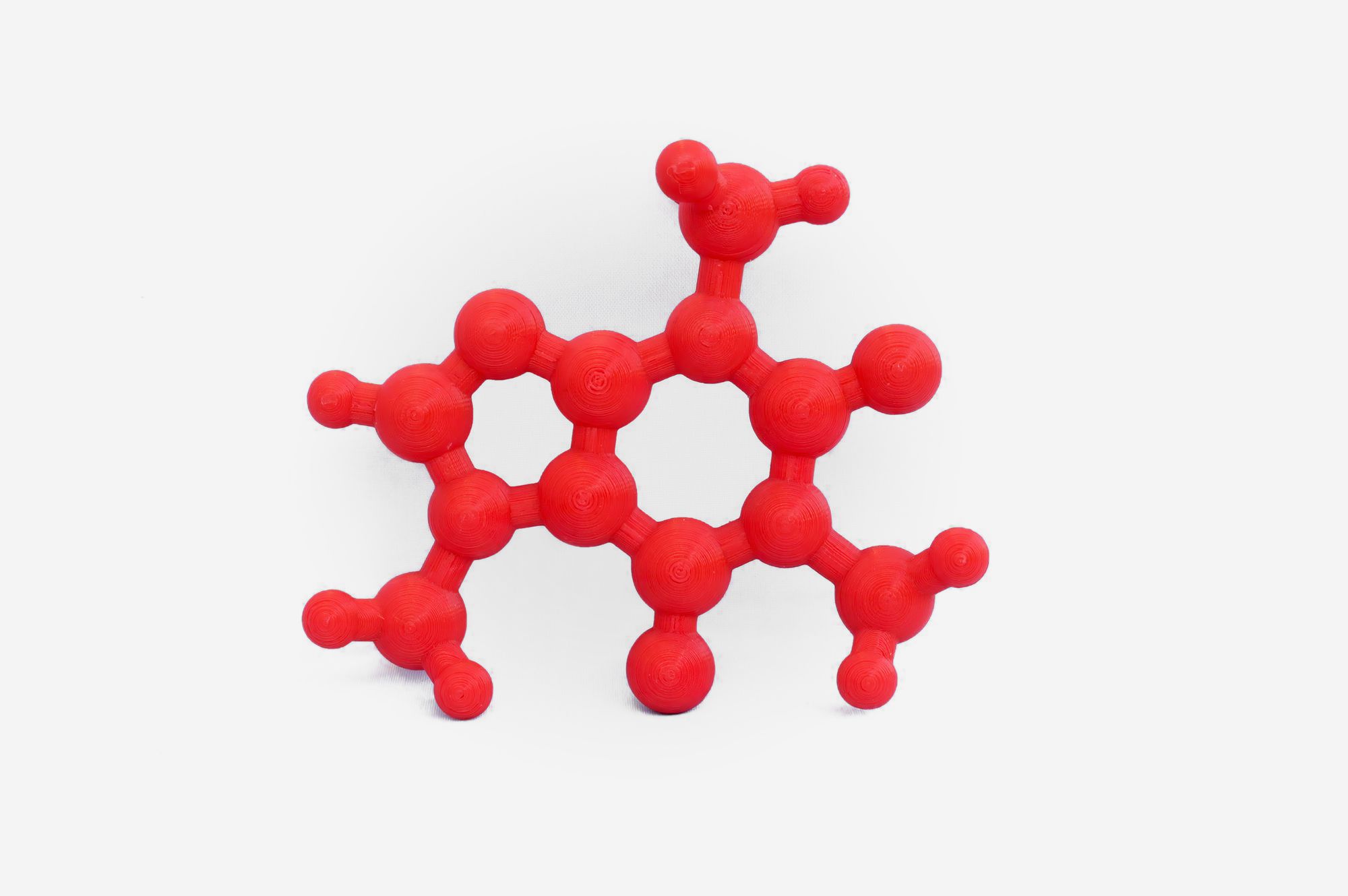
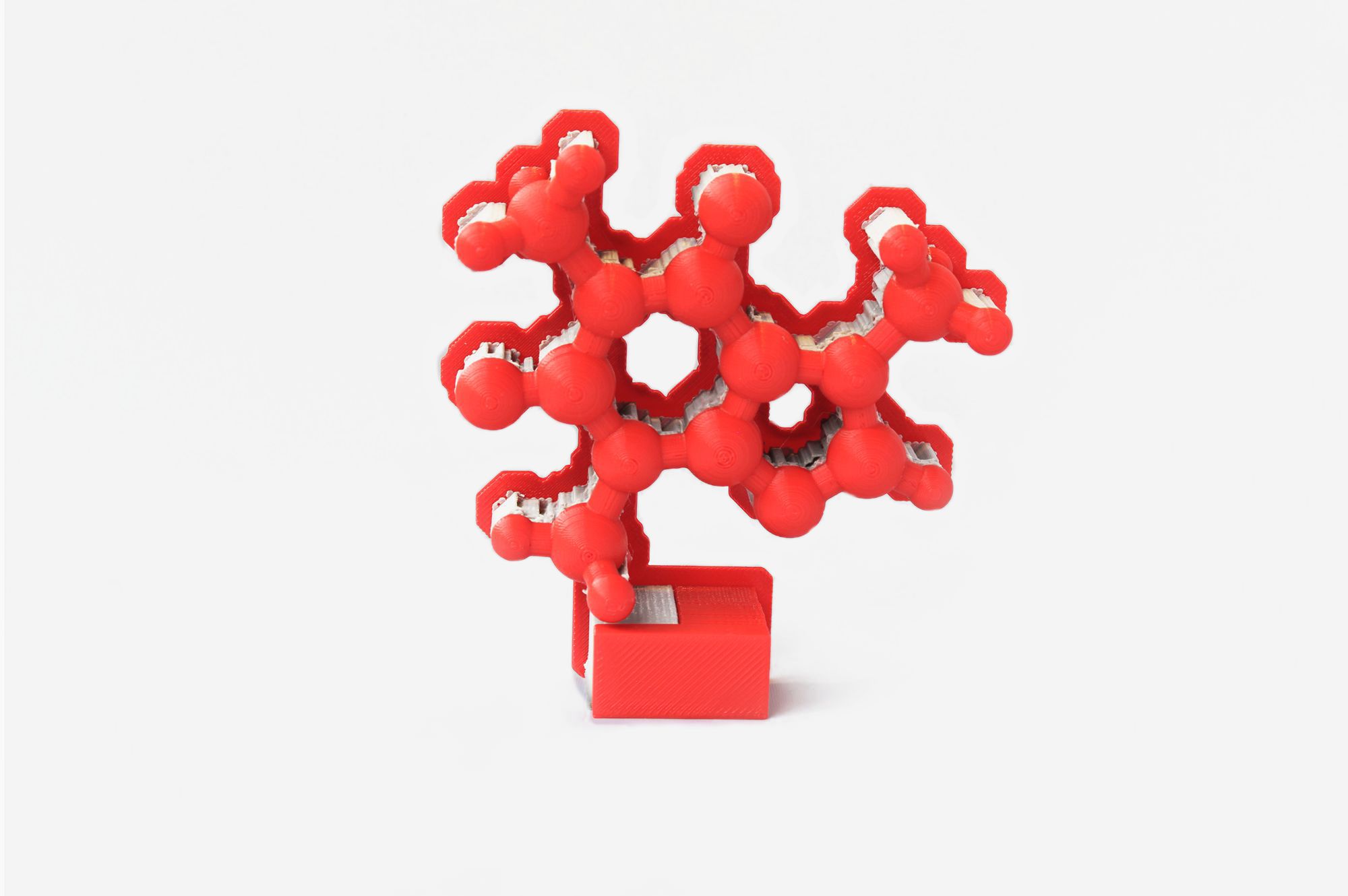
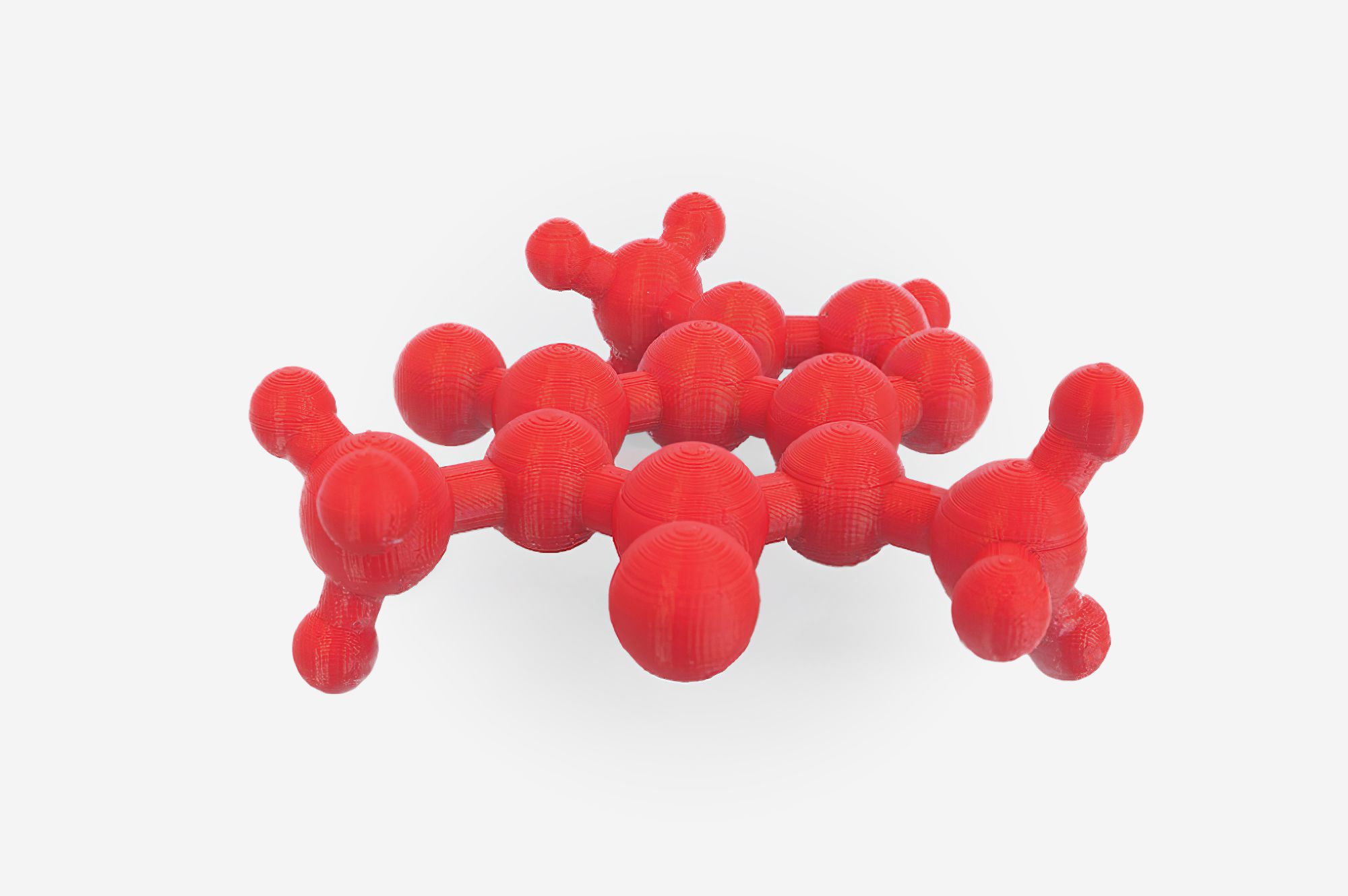
PETG FILAMENT
PETG is a very durable and a great material for a wide range of engineering requirements. Outside 3D printing, it is the most widely used plastic that is often used to create plastic liquid bottles.
This is due to its great ability to last and withstand abrasion. It offers parts that are strong and when printed with less infill, the parts are slightly flexible just like standard water bottles.
Material Properties

Strength
PETG is very strong and this allows it to withstand high pressures in comparison to other filaments. This is especially pronounce in load bearing applications.
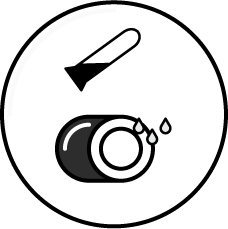
Chemical Resistant
Considering its use in the creation of various containers, PETG is not affected by a wide selection of chemicals and this property is useful in certain engineering projects.

Impact Resistant
PETG has very high impact resistant properties with the added benefit of being ductile. This means its less brittle than ABS/EPLA and won’t break easily if a force is applied.

UV Resistant
In contrast to ABS, PETG parts aren’t affected as much by UV radiation and can withstand it better.

Disadvantage
Although strong, PETG parts scratch easy in comparison to other materials like PP.

Disadvantage
PETG can string a lot during the printing process.
Material Specifications
Spool Dimensions

200 mm

52 mm

54 mm

3 mm
Filament Information

1.75 mm( ± 2%)

750 g

218 m

1.27 g/cm³
PRINTING CHECKLIST
Extrusion
Temperature
±230 ºC
PETG has a relatively high melting temperature. When it is molten, it has more elasticity properties than other non flexible filaments.
Bed Adhesion
Temperature
±70 ºC
PETG may have adhesion issues with standard beds, therefore it is recommended to use a heated bed. This will ensure proper adhesion and reduce warping during the printing process. To aid with adhesion, using a brim can help reduce possible warping especially with large surface area parts.
Bed
Adhesion
Options


Moisture & Storage
PETG is highly resistant to liquids, this is not the same as being hygroscopic which PETG is and not storing it in a sealed air tight bag can affect print quality. A print with blobs and oozing is an indicator of this.
Drying before Printing
Similar to ABS, PETG has a high melting temperature but should be dried for 6-16 hours at 50 ºC if it is not stored properly to reduce moisture content.
Cooling
Cooling PETG is not required and is only beneficial for smaller parts with complex geometries.
Your First Layers
Layer height for PETG is a dependent on the requirement of the model. Smaller layer heights improve the overall aesthetics of the object.
Speeds
Optimising print speeds also can improve surface finish and how glossy the model becomes. PETG is prone to oozing and stringing therefore slower speeds can help. Furthermore, it is difficult to get good bridging with PETG because of this and needs to be taken into consideration when choosing what model to print.
Skirt / Brim
Not require, but if your model has issues adhering to the print bed, this may aid in reducing warping issues.
Support
Material
PVA or PETG breakaway.
Priming Pillar
Used when printing dual colour or with breakaway support.
INDUSTRY EXAMPLE PRINT
FUNCTIONAL PROTOTYPES
PETG is most associated with the production of bottles or containers because of its great chemical resistant properties. Apart form that however it has many other uses cases, especially in additive manufacturing.
One use case is to print outdoor brackets for various applications where a part is needed to withstand the effects of wear and tear where other thermoplastics would degrade rapidly if exposed to similar conditions.
Furthermore, it can also be used to create snap to fit components because PETG is ductile, especially when parts are thinner, while increasing infill makes it more stiff and rigid.
3D MODEL
FINAL PRINT
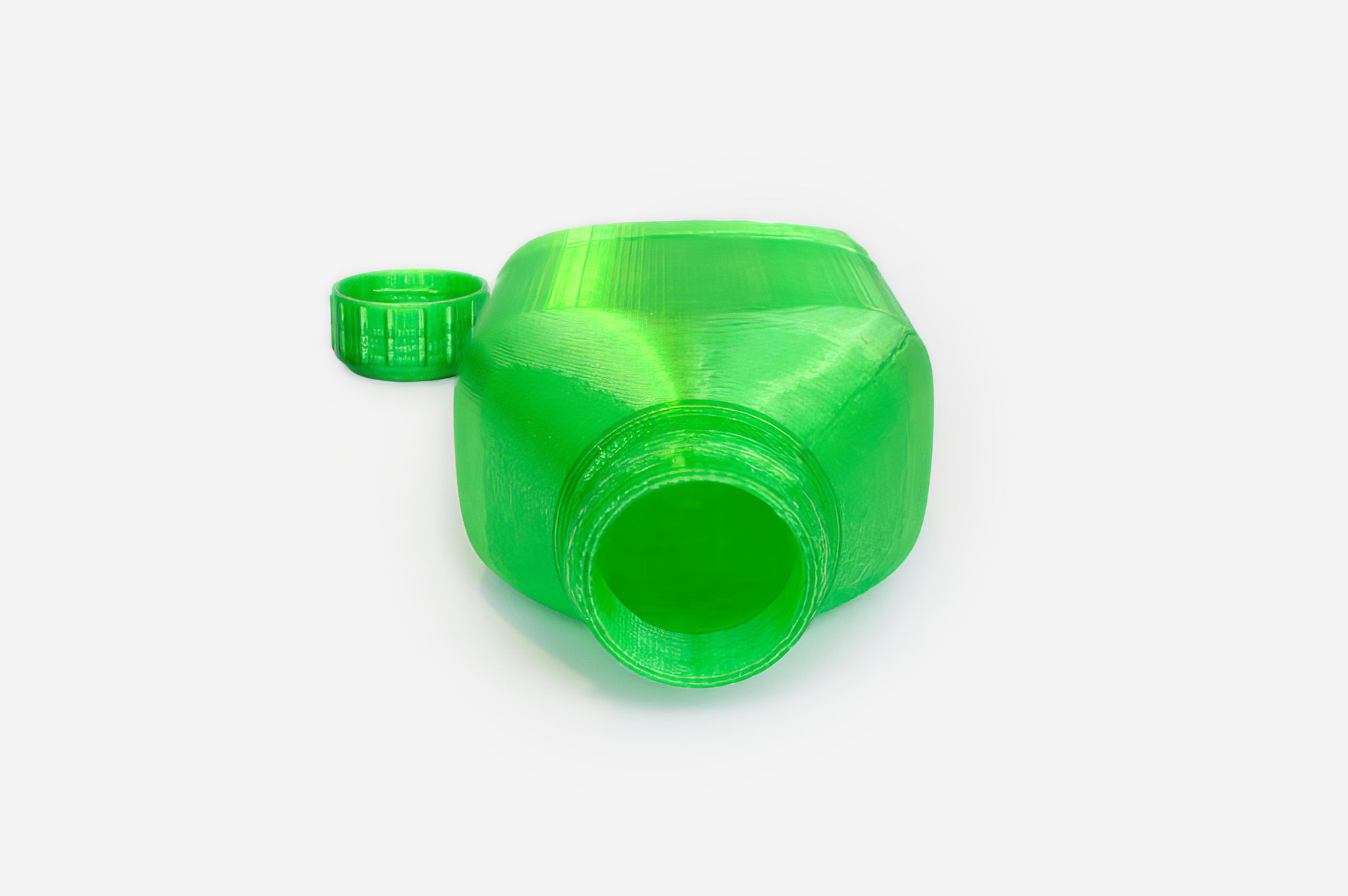
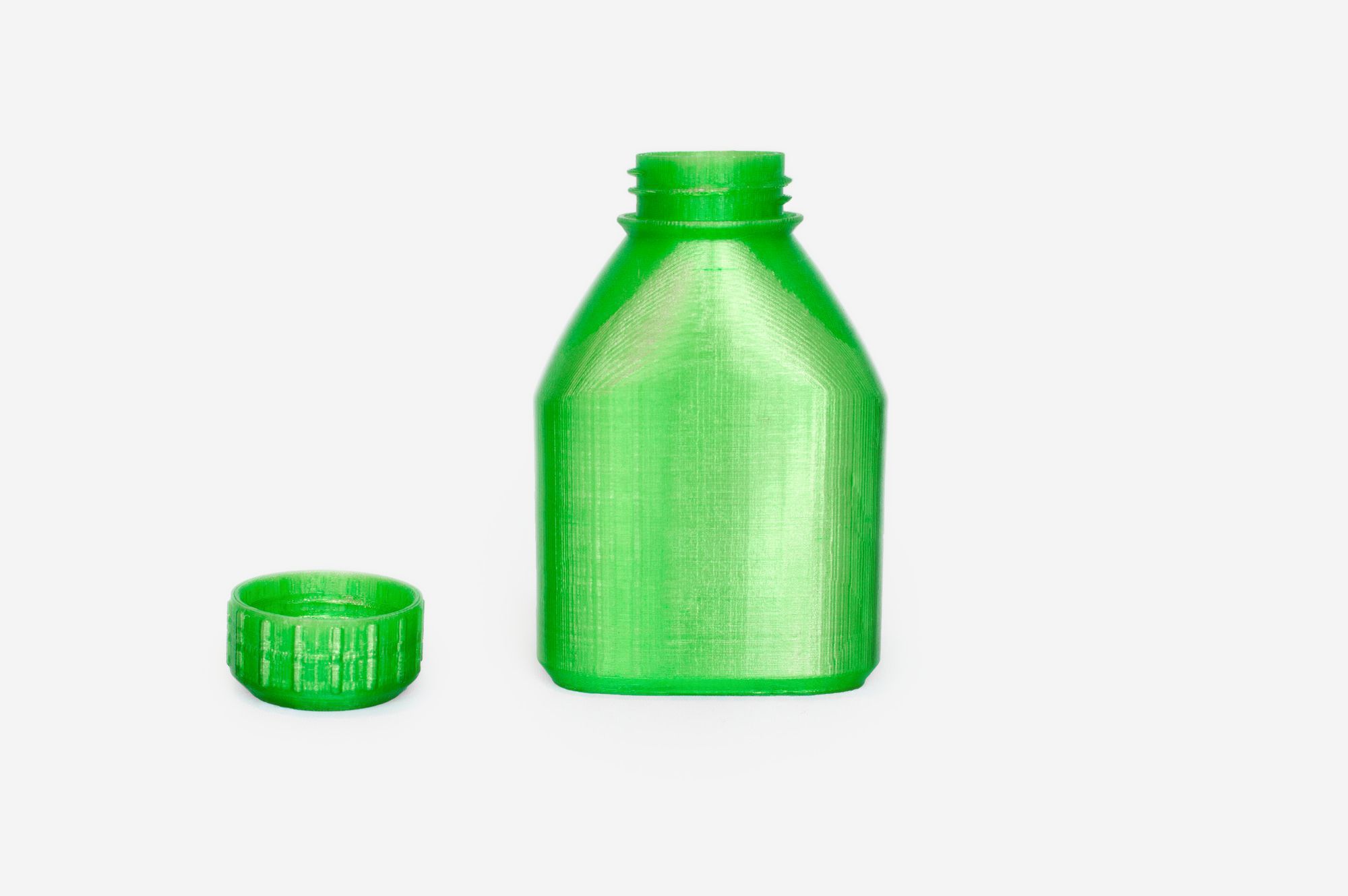
NYLON FILAMENT
Nylon filament is a material that offers high durable and strong printed parts. Additionally, when printed at lower infill amounts, it can create slightly flexible parts.
Although similar to PETG, it offers far greater durability for engineering functional parts with the slight advantage of offering very low coefficient of friction parts.
Material Properties
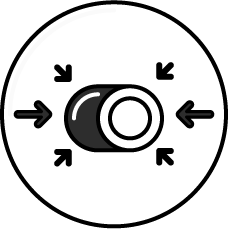
Strength & Durability
Nylon is one of the strongest and most durable filaments on the market. It offers parts that can resist wear and tear and also offer great tensile strength.
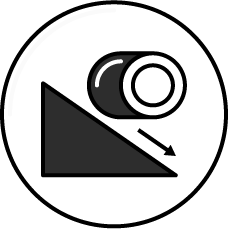
Low Friction
Having a low coefficient of friction means that Nylon is a great material for producing parts like gears or parts that require motion.

Impact Resistant
Nylon parts have great impact resistance and can absorb impact forces with minimum deforming. They give users versatile options for prototyping applications.

Heat Resistant
Nylon allows for the creation of various engineering parts that can withstand high temperatures. Combining this attribute with the low friction feature can create strong functional prototypes.

Disadvantage
Achieving optimum bed adhesion can be challenging when printing with Nylon.

Disadvantage
Nylon is highly hygroscopic which will affect print quality if the filament is not dried properly.
Material Specifications
Spool Information

200 mm

52 mm

54 mm

6 mm
Filament Information

1.75 mm( ± 2%)

750 g

218 m

1.08 g/cm³
PRINTING CHECKLIST
Extrusion
Temperature
±250 ºC
Nylon has a high extrusion temperature but be mindful of this since it can string and ooze more if the temperature is too high. If the temperature is too low, then it will have trouble adhering to the print bed.
Bed Adhesion
Temperature
±90 ºC
Due to its material properties, Nylon does not adhere well with most surfaces including BuildTak and needs higher heated bed temperatures. Nylon can warp significantly during the printing process and requires J8567 stickers to keep the first layer stuck to the build-plate.
This issue also transfers to the later stages of the printing process and can lead to cracking as some layers peel away from others. To reduce this issue, we recommend printing with the enclosure closed to reduce temperature changes and prevent cracking.
Bed
Adhesion
Options



Moisture & Storage
If Nylon filament is not stored correctly, printed models will have a rougher texture and you may face lots of oozing. You may hear popping or cracking sounds that indicate that it has absorbed too much moisture.
Drying before Printing
If the quality of your models are low, then drying Nylon filament in an oven for a period of 6-16 hours at 50 ºC and this should remove most of the exess moisture that has been absorbed.
Cooling
Nylon does not require cooling which can cause cracking due to shrinkage .
Your First Layers
Nylon does not have any layer height requirements apart from aesthetics. However, Nylon parts can crack, therefore increasing the shell layers can help reduce this.
Speeds
Nylon can warp and crack during the printing process and this can be reduced if inter layer bonding is increased. This is done with slower printing speeds that gives the filament time to bond correctly. Printing at higher speeds can create print failures more often.
Skirt / Brim
Not required, but helps to reduce issues, for larger parts.
Support
Material
INDUSTRY EXAMPLE PRINT
SPORT NYLON PRINT
As mention, Nylon parts have very low friction properties making it a great choice for a surfboard fin prototype. A part printed with Nylon also has the added benefit of being able to withstand high stresses which makes it ideal for tooling and functional parts that can be tested to gauge how well a design can perform in controlled situations.
3D MODEL
FINAL PRINT
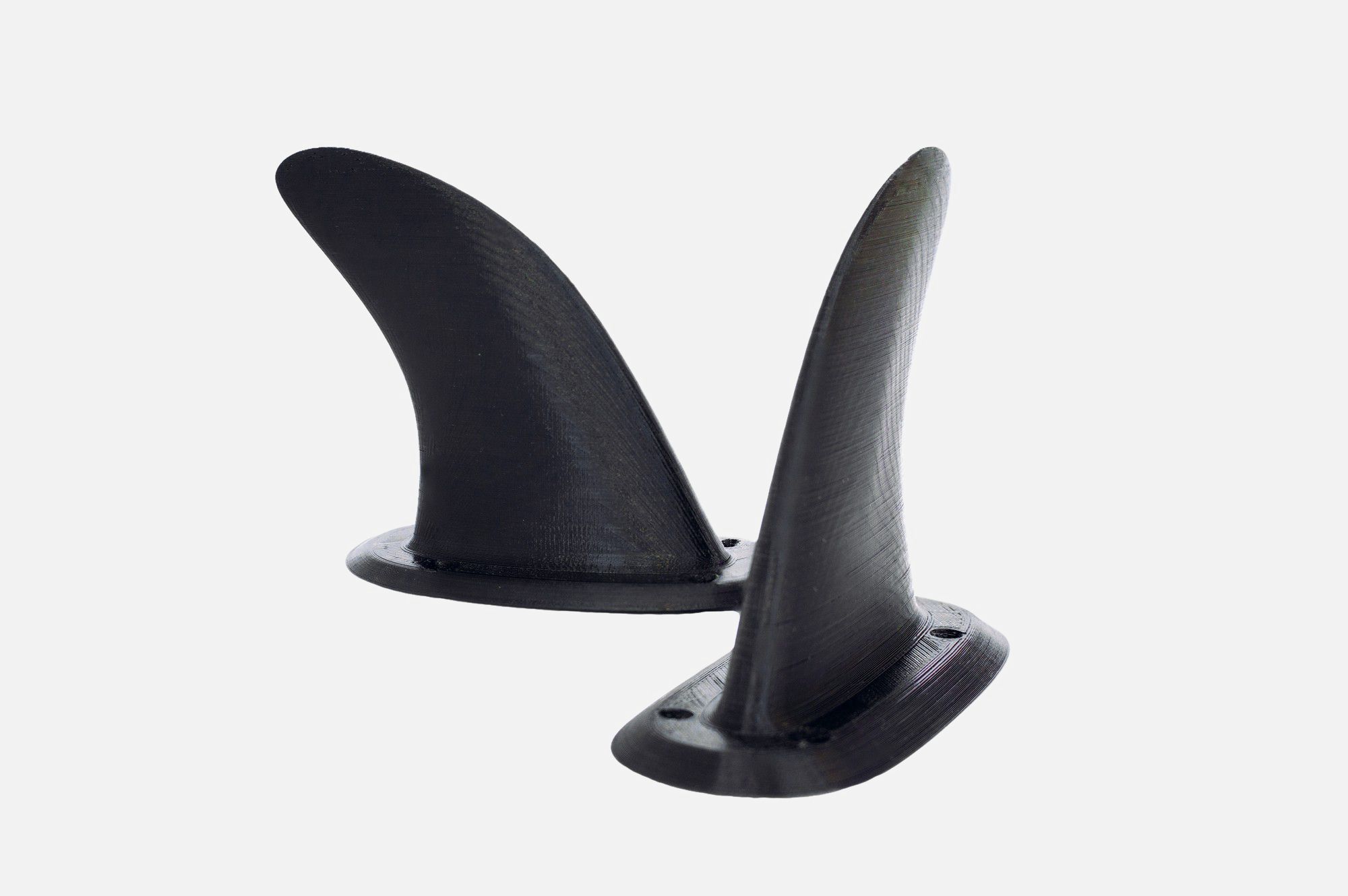
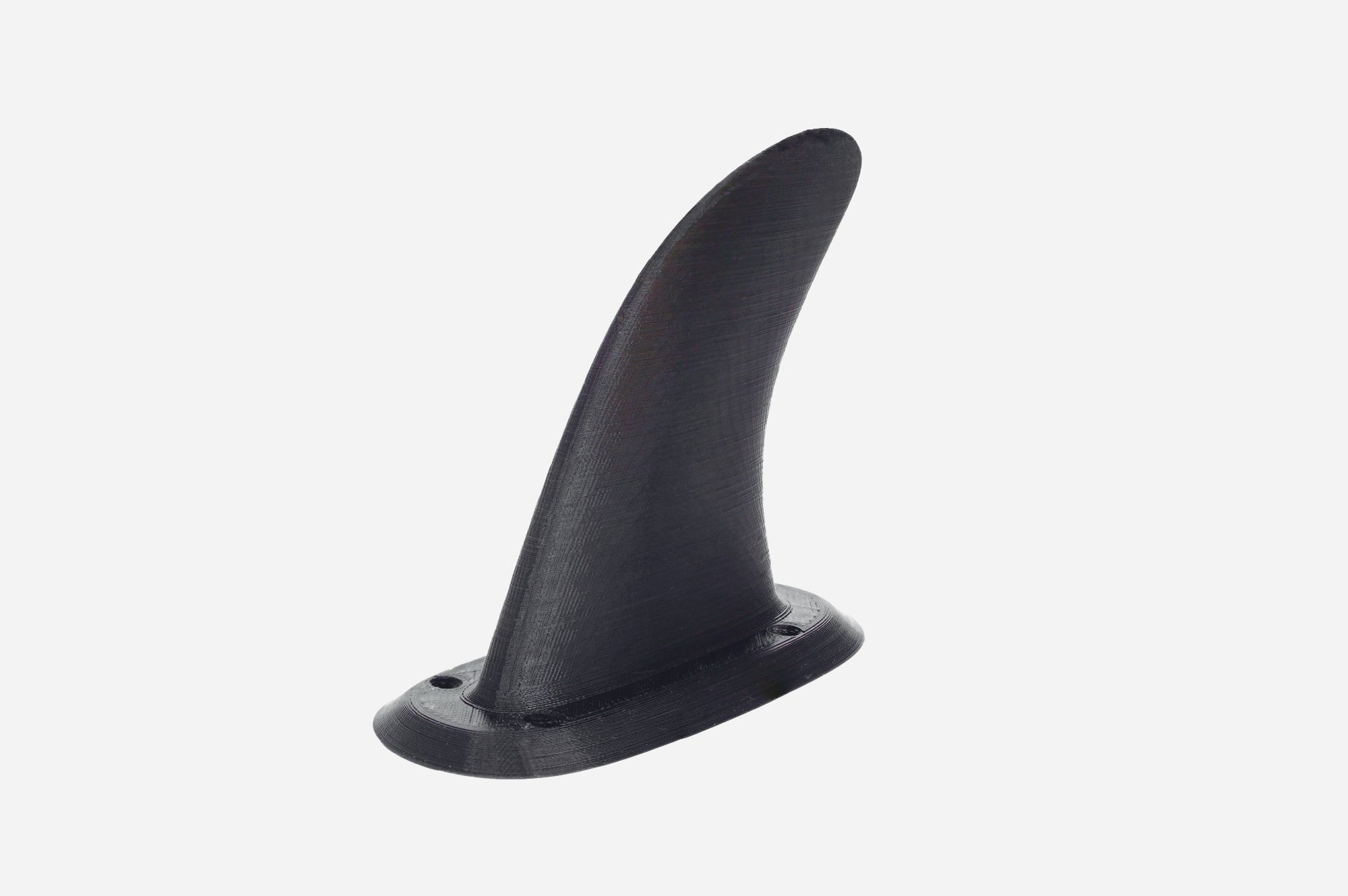
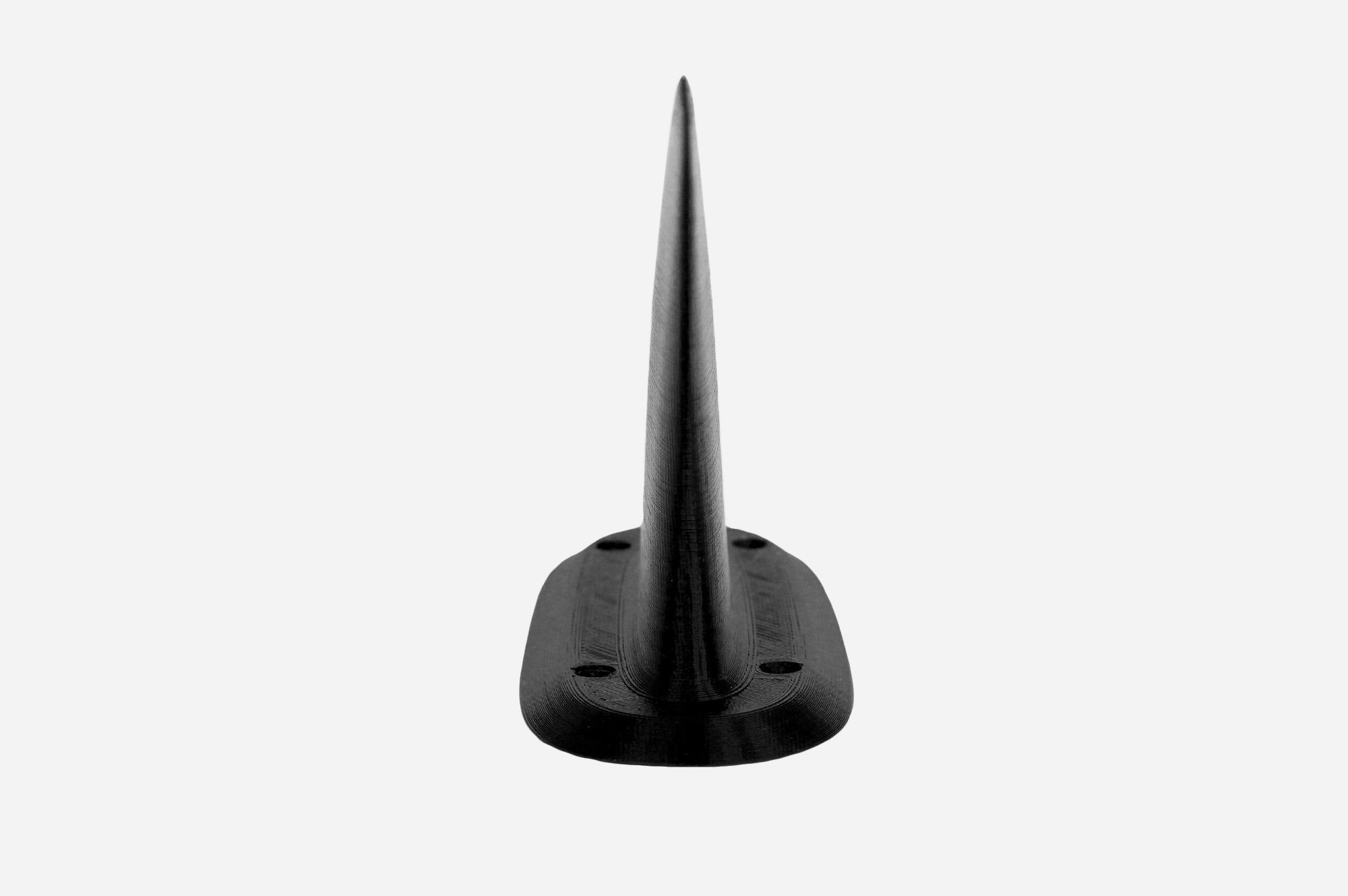
FLEX FILAMENT
Flexible filament (TPU) is created by combining a standard polymer with rubber. This creates a filament that is very similar to what is used in standard manufacturing for parts in automobiles and many household items.
The printed objects that can be created are not only flexible, but have higher elasticity than most of the other slightly flexible filaments available.
Material Properties

Elasticity
TPU parts are both highly elastic and flexible which offers a unique combination of 3D printing applications for both visual and functional prototypes.

Chemical Resistant
Parts produced with TPU are resistant to most standard chemical solutions which opens it up for a range of uses to create long lasting parts.

Impact Resistant
Flex parts are highly impact resistant due to its elastic rubber like properties.

Heat Resistant
Due to its abrasion resistant properties, coupled with the elasticity, flex parts will last and endure various stress depending on the build direction.

Disadvantage
TPU is challenging to print with because it strings significantly and can ooze. This is due to its elasticity properties making it harder to work with.

Disadvantage
TPU prints cannot be post processed after printing which can be a minus for visual prototypes.
Material Specifications
Spool Information

200 mm

52 mm

54 mm

3mm
Filament Information

1.75 mm( ± 2%)

750 g

173 m

1.20 g/cm³
PRINTING CHECKLIST
Extrusion
Temperature
±230 ºC
Printing with Flex may involve some testing with the optimum temperature. Due to its properties, it may string if the temperature is to high and create messy prints.
Bed Adhesion
Temperature
±70 ºC
Flex filament may face some adhesion issues when printing and requires a relatively hot heated bed to ensure the filament stays on the print surface.
Bed
Adhesion
Options


Moisture & Storage
TPU absorbs moisture very easily and requires drying before printing. Additionally using a poly-box during the printing process will also aid in keeping the material dry during the printing process which is crucial for parts that require longer lead times.
Drying before Printing
To dry TPU, it should be heated in a oven for 12 hours to reduce moisture content at 50 ºC.
Cooling
It is recommended to use cooling for TPU since it is very viscous when molten and needs to be cooled to set it during the printing process.
Your First Layers
TPU is a challenging material to print with. It has higher risk of being plagued with blobs and oozing which can create rough parts. Additionally, it has poor bridging characteristics and prints better with objects that require consistent extrusion where there are less stops and starts of the extrusion process.
Speeds
TPU prints better with slow speeds. This again is due to its ability to stretch without breakage when molten which causes oozing and stringing. Faster speeds can lead to this and slower speeds allows the material to adhere better and settle per layer .
Skirt / Brim
Not require, but helps reduce issues, for larger parts.
Support
Material
PVA but take into consideration that objects with too many overhangs will be difficult when printing with Flex.
Priming
Pillar
Required when printing with support.
INDUSTRY EXAMPLE PRINT
PRODUCT ACCESSORIES FLEX PROTOTYPE
TPU is often used to create parts that need to be elastic. One great use case is printing phone covers but it can also be used on other industries for example in the creation of car panel designs, shoe designs and for medical devices.
3D MODEL
FINAL PRINT
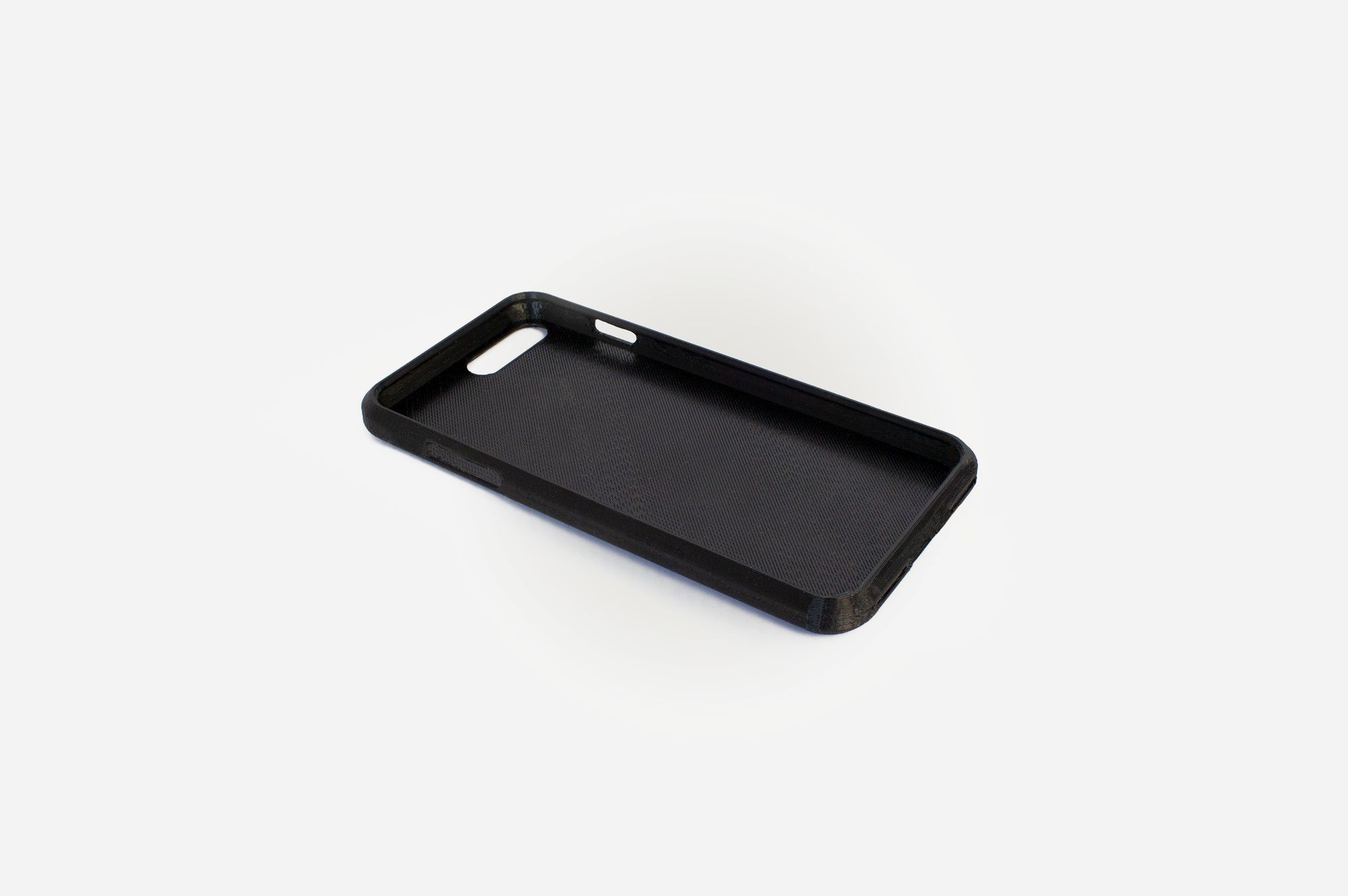
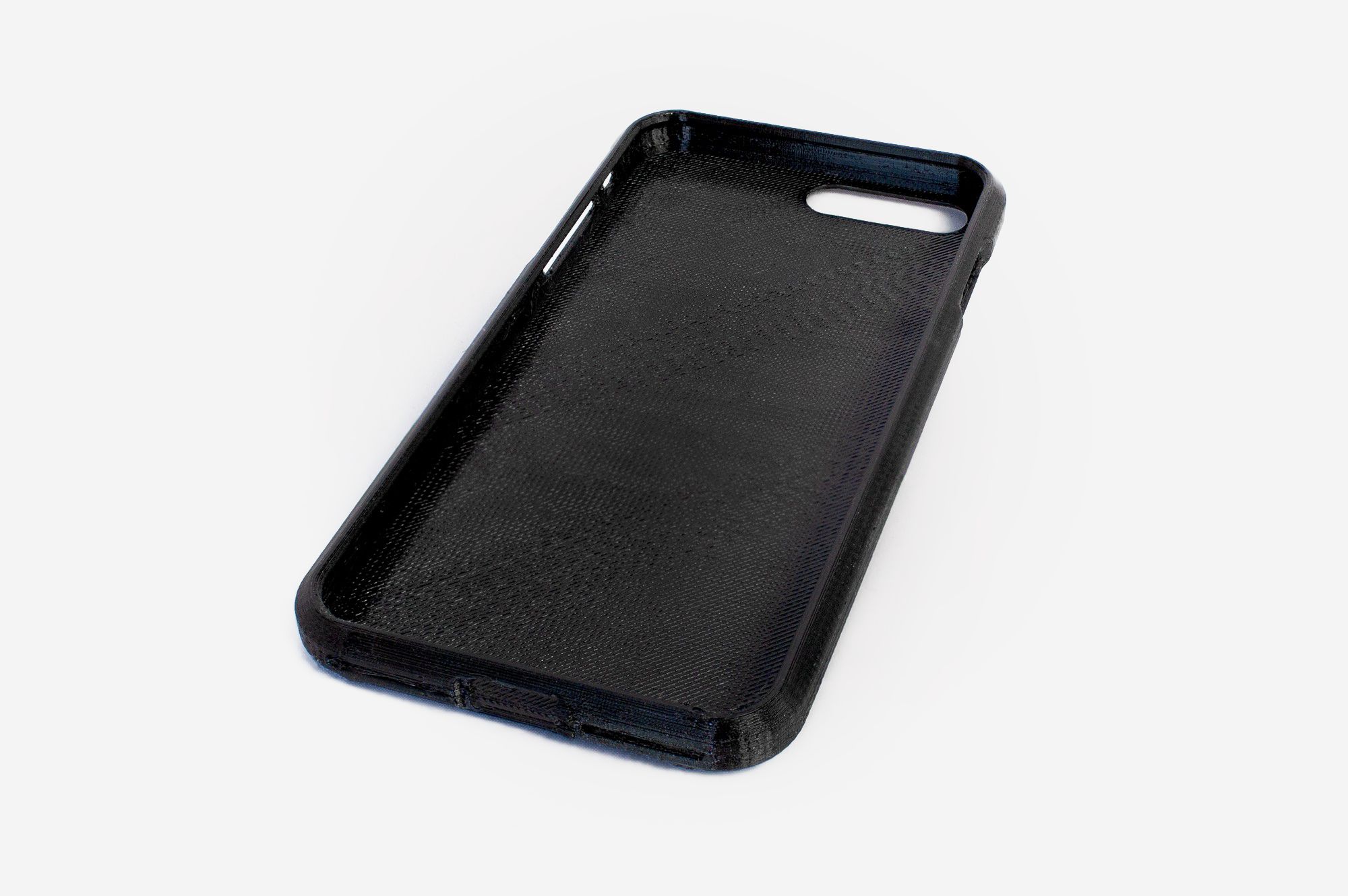
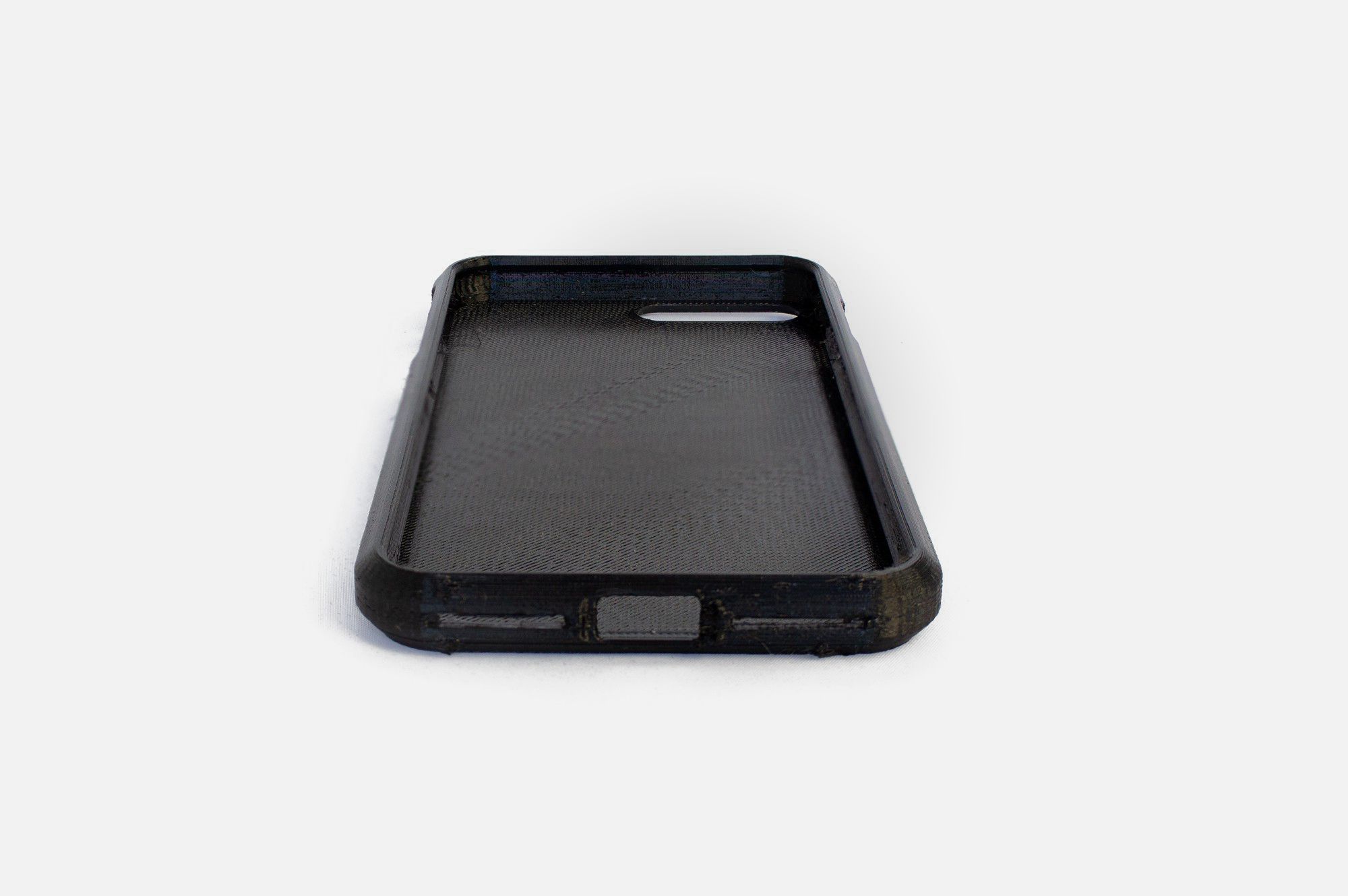
PP FILAMENT
PP is a recent addition in the 3D printing world and offers some unique properties that make it an important material for engineering purposes. It is a semi crystalline polymer which means on a molecular level, once the material cools, it retains its molecular structure which has attributes of added strength and durability.If printed with lower infill settings, it can create flexible parts that have almost no bending failure properties, while increasing infill can create more rigid parts , but both types retain their material properties.
Material Properties

Heat Resistant
PP has great heat resistant properties meaning it is ideal for engineering applications. This mainly due to its melting temperature which is at 164 ºC.

Chemical Resistant
PP is not affected by most solvents and is often used to create containers for various chemicals.

Impact Resistant
Because off the semi-crystalline structure, PP is highly resistant to impacts. The flexibility features also make it useful since it is often used to create hinges in standard manufacturing.

Heat Resistant
PP is highly resistant to wear and can create parts that do not erode easily with heavy use. Furthermore, parts created are strong while being lightweight.

Disadvantage
PP does not bond well with any other material and this means it is not possible to print with standard adhesion methods apart from PP based adhesive products

Disadvantage
PP models cannot be post processed due to its adhesion issues.
Material Specifications
Spool Information

200 mm

52 mm

65 mm

6 mm
Filament Information

1.75 mm( ± 2%)

500 g

233 m

0.89 g/cm³
PRINTING CHECKLIST
Extrusion
Temperature
±220 ºC
PP quickly settles back to its original molecular structure once it cools and therefore printing with it requires high temperatures. This ensures it flows smoothly during the printing process.
Bed Adhesion
Temperature
±80 ºC
Polypropylene is semi-crystalline which means it doesn’t adhere to any other material well. This brings about a problem because it won’t adhere to any print surface, other than its own. Therefore printing with PP requires the use of Tesa PP 57167 tape but not directly on the BuildTak Surface. Instead if you remove the Flex Plate and flip it around and use the tape on the sheet metal side to print on.
Bed
Adhesion
Options


Moisture & Storage
PP is highly resistant to a lot of things . Although it is not hygroscopic its still recommended to store PP away from moisture. Keep your filament dry and away from direct sunlight.
Cooling
Cooling is not required for PP parts unless they are small and have complex geometries.
Your First Layers
PP can warp significantly during the printing process. Using larger layer heights increase the likely-hood of this since at the edges, the stresses that are created as the material cools can cause more warping with larger heights. Smaller layers create less stress and improve interlayer bonding.
Speeds
Printing with Polypropylene at higher speeds creates rough edges and parts that have poor adhesion between layers .Although this is true for all filaments, the effects are more pronounced with PP due to its material properties.
Skirt / Brim
Not required, but helps to reduce issues, for larger parts.
Support
Material
None
INDUSTRY EXAMPLE PRINT
AUTOMOTIVE INDUSTRY PRINT
Carbon filament parts in 3D printing are often used as functional prototypes or as housings for models that need to withstand high impact forces. It is also often used to create levers because of its increased rigidity which is due to small carbon bits added to the base material in the spool.
3D MODEL
Research at Brigham Young University (CMR@BYU),
FINAL PRINT
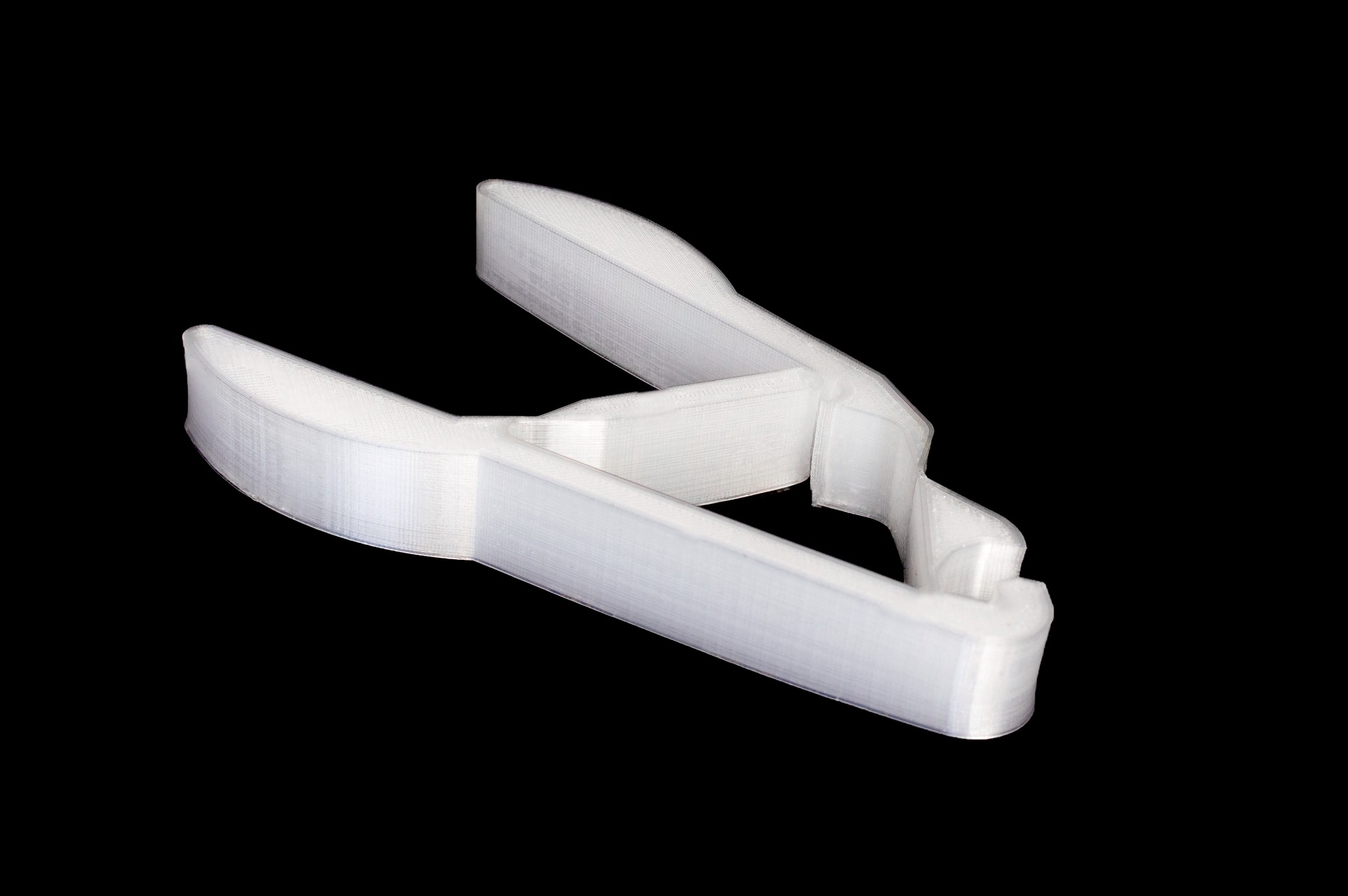
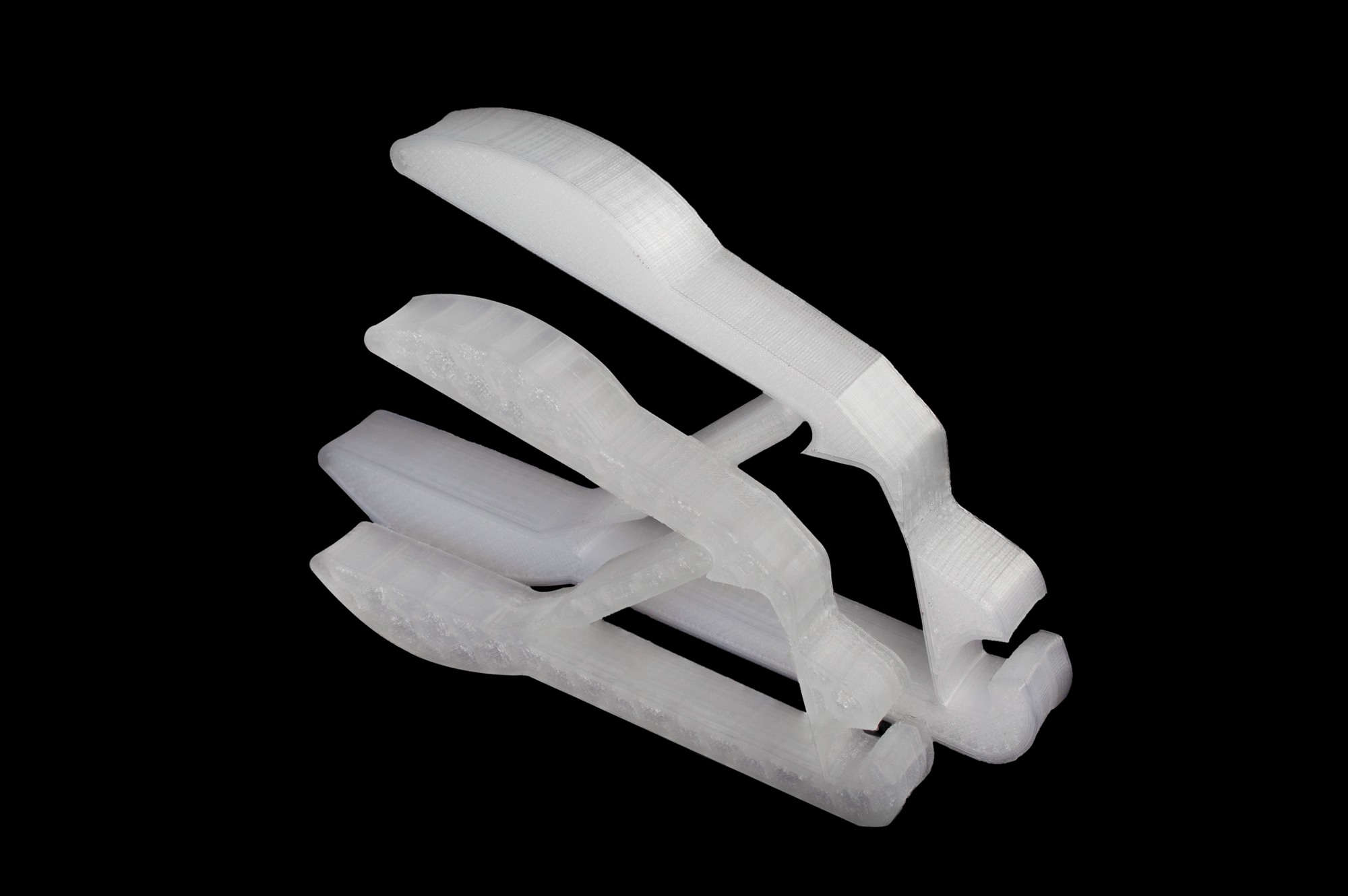
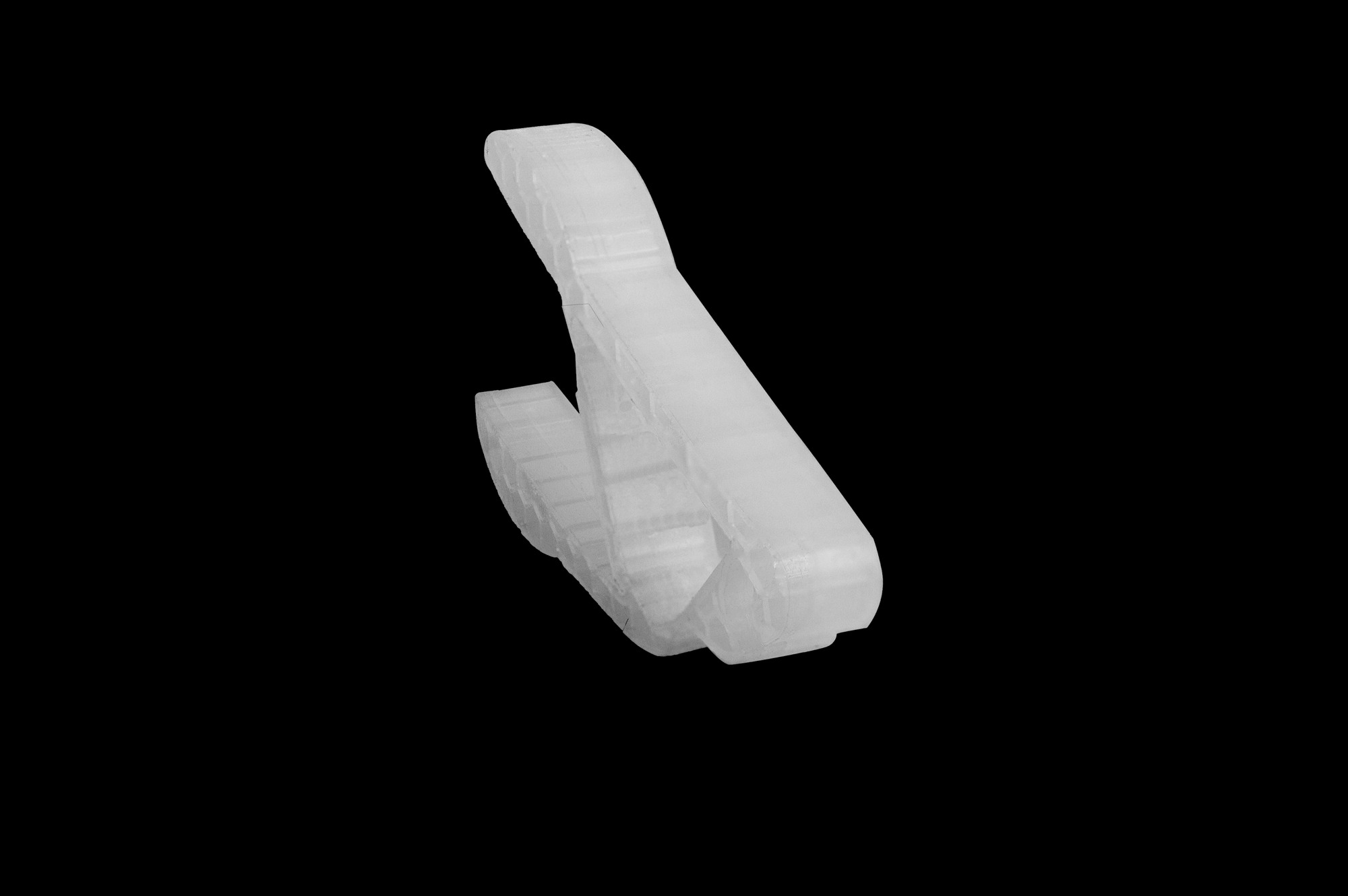
PVA FILAMENT
PVA is used as a soluble support material during printing complex parts. It works as a bridge material between open areas of the print which would otherwise deform.
Although it is possible in slicer software to use the same material as support, this often requires extra post processing to remove the break-away support and with some objects, this can create rough 3D prints.
PVA gives more flexibility and options for complex parts and can aid in producing complex parts in one pass unlike other manufacturing processes.
Material Properties

Water Soluble
PVA is soluble in water which means post processing is relatively easy. Depending on the amount used, all that is needed is to submerge the model in water for a few hours and the PVA melts away.

Great for Overhangs
Parts that require large overhangs for example arches, will need the use of PVA to support the print.

Disadvantage
PVA needs to be stored in a airtight container because it is highly hygroscopic which will make the printing process difficult.

Disadvantage
PVA can cause clogging of the nozzles during the printing process. This is especially pronounced when the printing process requires the heated extruder to remain stationary for long periods of time.
Material Specifications
Spool Information

200 mm

52 mm

65 mm

6 mm
Filament Information

1.75 mm( ± 2%)

500 g

188 m

1.19 g/cm³
PRINTING CHECKLIST
Extrusion
Temperature
±215 ºC
PVA extrudes at a temperature slightly higher than EPLA which makes it the ideal material to use as for support. This is due to both materials being able to adhere to each other without issues. Larger temperature differences may cause issues when printing with support materials.
Bed Adhesion
Temperature
±40 ºC
As mentioned before, PVA and EPLA go well together and PVA adheres well with the print bed at around 40 ºC.
Bed
Adhesion
Options



Moisture & Storage
PVA is highly hygroscopic and this makes it prone to oozing during the printing process. This can affect your model significantly by blocking paths that the extruder has to work on and resulting in deformed parts.
Drying before
Printing
PVA has a relatively low melting point and needs to be dried if necessary at 45 ºC for 4-6 hours to dry.
Cooling
It is recommended to use cooling for PVA which helps to solidify it quicker so as to aid as a support structure during printing.
Prime Pillar
The purpose of a Prime pillar is twofold. It is a rectangular 3D part that is printed at the front of a model. It is only used when printing with two materials using the two extruder and is printed each time the extruder change. Its purpose is to prime the extruder to ensure they are properly heated and extruding properly. Additionally, it cleans the nozzles to remove excess dried filament, especially for material that oozes easily.
Skirt / Brim
Recommended
Support
Material
1. E-PLA works well, especially for large parts
2. TPU
3. PET/Co-polyesters
PVA SUPPORT PRINT
EPLA MOLECULE MODEL WITH PVA SUPPORT
There are various separate settings that can be adjusted in your slicer software for support structures. You add your own or the software can automatically plot them for you. As you gain experience, you will start to understand different aspects so you can use less support depending on your model.
SUPPORT MODEL
FINAL PRINT
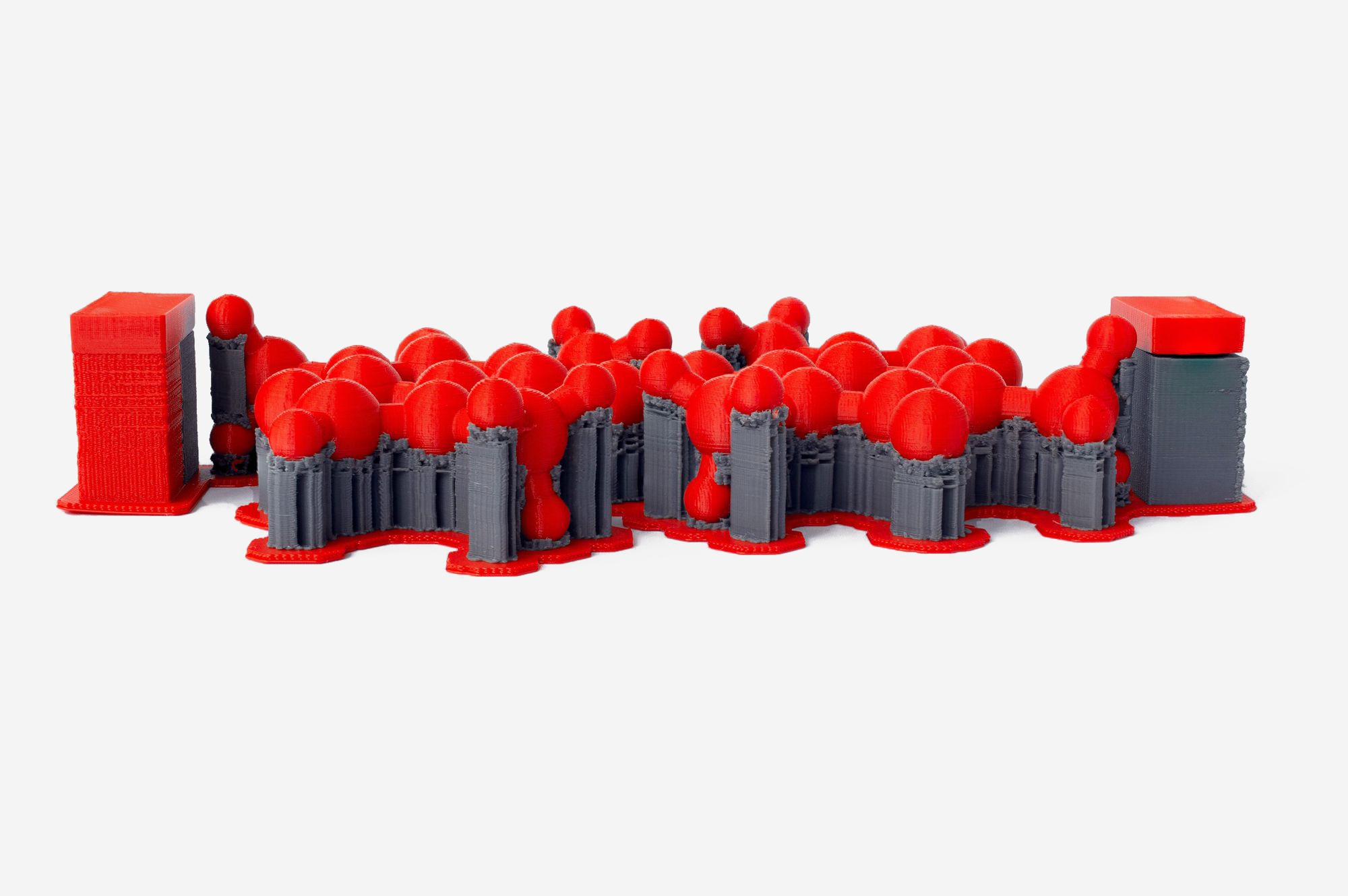
HIPS FILAMENT
HIPS is a filament that can both be used as a support material and also to create 3D prototypes. In terms of mechanical properties, it is very similar to ABS where it is often used as a support material due to the similar temperature properties allow both materials to stick to each other.
With HIPS you can create parts with great dimensional accuracy and like ABS , it can be machined further or painted in the post processing stage.
Material Properties

Dissolves in D-Limonene
HIPS dissolves in citrus based acids like D-Limonene where it can be used as a support material for complex parts that are made from namely ABS.

Great for ABS Overhangs
HIPS is a great support materials for complex ABS geometric 3D prints in the same way how PVA works well with PLA. This is due to it being able to adhere well to ABS during printing allowing for smooth parts once removed.

Impact Resistant and Easy to Print
HIPS is highly impact resistant and can be used to create proof of concept functional parts. HIPS creates great looking 3D prints and it is also inexpensive, which means it is ideal for rapid prototyping models.

Durable, Strong & Lightweight
HIPS is highly strong and also lightweight meaning it can be used to create a variety of functional prototypes.

Disadvantage
HIPS can face warping issues that can make it challenging to print.

Disadvantage
HIPS is hygroscopic and needs to be stored in a airtight bag.
Material Specifications
Spool Information

200 mm

52 mm

54 mm

3mm
Filament Information

1.75 mm( ± 2%)

750 g

168 m

1.03 g/cm³
PRINTING CHECKLIST
Extrusion
Temperature
±230 ºC
HIPS has a high melting temperature and this makes it a great support material for ABS parts which would normally melt PVA support.
Bed Adhesion
Temperature
±90 ºC
HIPS can warp and in order to help it adhere to the print bed, a high temperature setting will allow it to remain fixed during the printing process.
Bed
Adhesion
Options


Moisture & Storage
With any filament, it is highly recommended to store HIPS in a sealed bag since it will allow for the material to last and create better prints.
Drying before Printing
HIPS has a low sensitivity to moisture but if not stored properly then it should be dried in a oven for a period of 6-12 hours at 50 ºC.
Cooling
HIPS does not require cooling, however when printing smaller parts it can be beneficial.
Your First Layers
HIPS is relatively easy to print with and works similar to EPLA in terms of easy of use apart from the higher temperature requirements.
Speeds
TPU prints better with slow speeds. This again is due to its ability to stretch without breakage when molten which causes oozing and stringing. Faster speeds can lead to this and slower speeds allows the material to adhere better and settle per layer .
Skirt / Brim
Recommended for large parts and parts with a narrow base.
Support
Material
HIPS can be used as a support material for ABS prints.
Priming
Pillar
When using HIPS as a support material, the best process is to use a prime pillar which helps with ensuring extrusion settings and temperature settings are correct during each new layer pass. This is due to the switching of the extruder hot-ends for each new layer.
INDUSTRY EXAMPLE PRINT
ENGINEERING ABS PRINT WITH HIPS
HIPS as a support material has various settings similar to PVA apart from the extrusion temperature. One key though that is different is that HIPS is also great as a prototyping material which can create great models. It has a smooth finish and great mechanical properties which means you can achieve functional prototypes with it as well.
3D MODEL
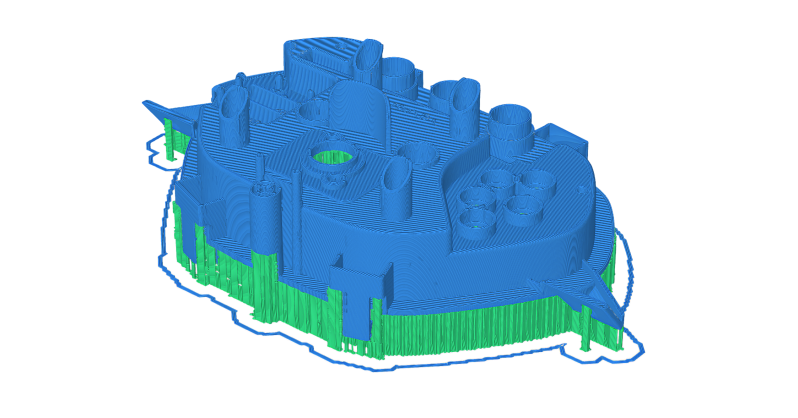
FINAL PRINT
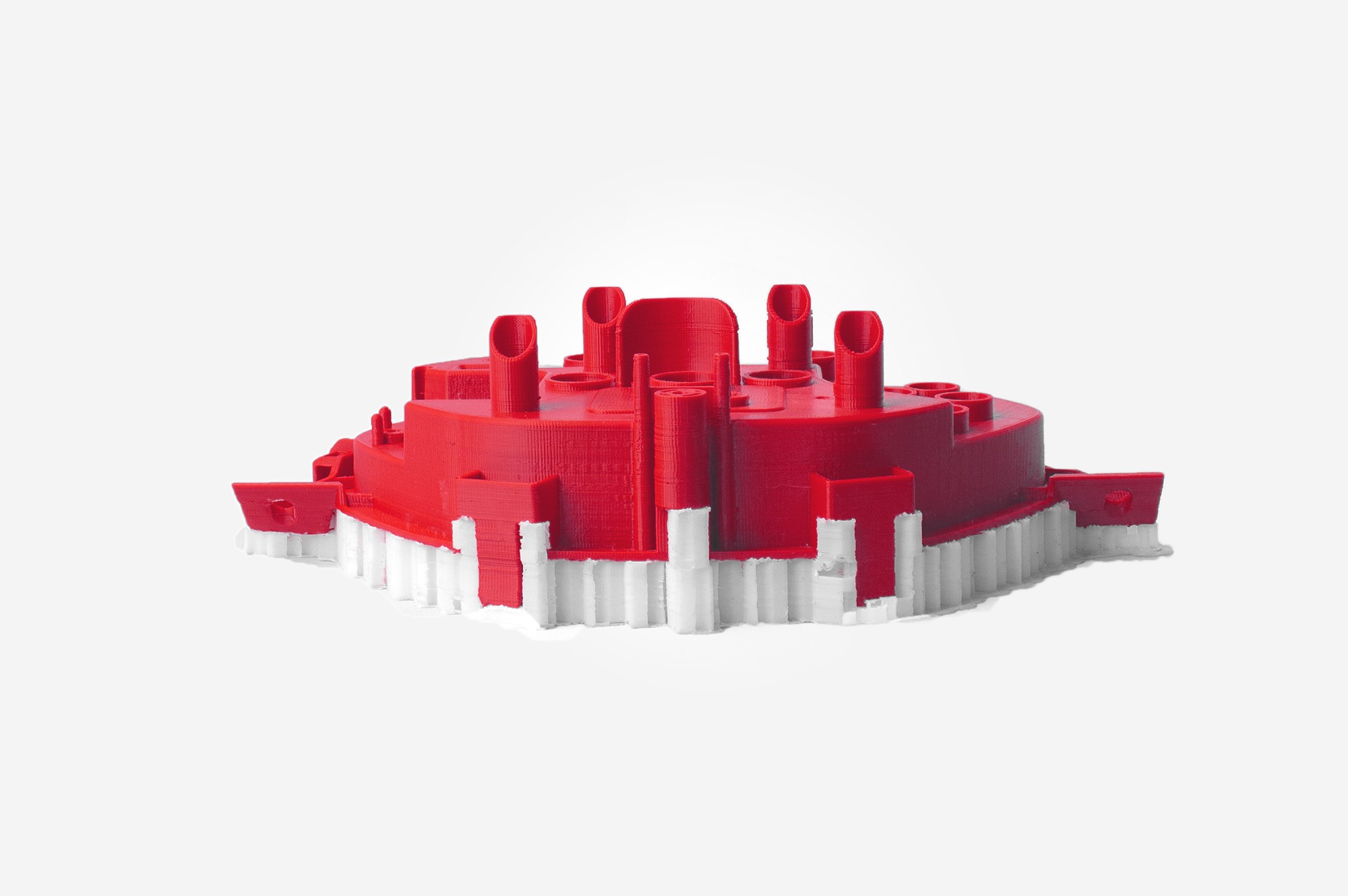
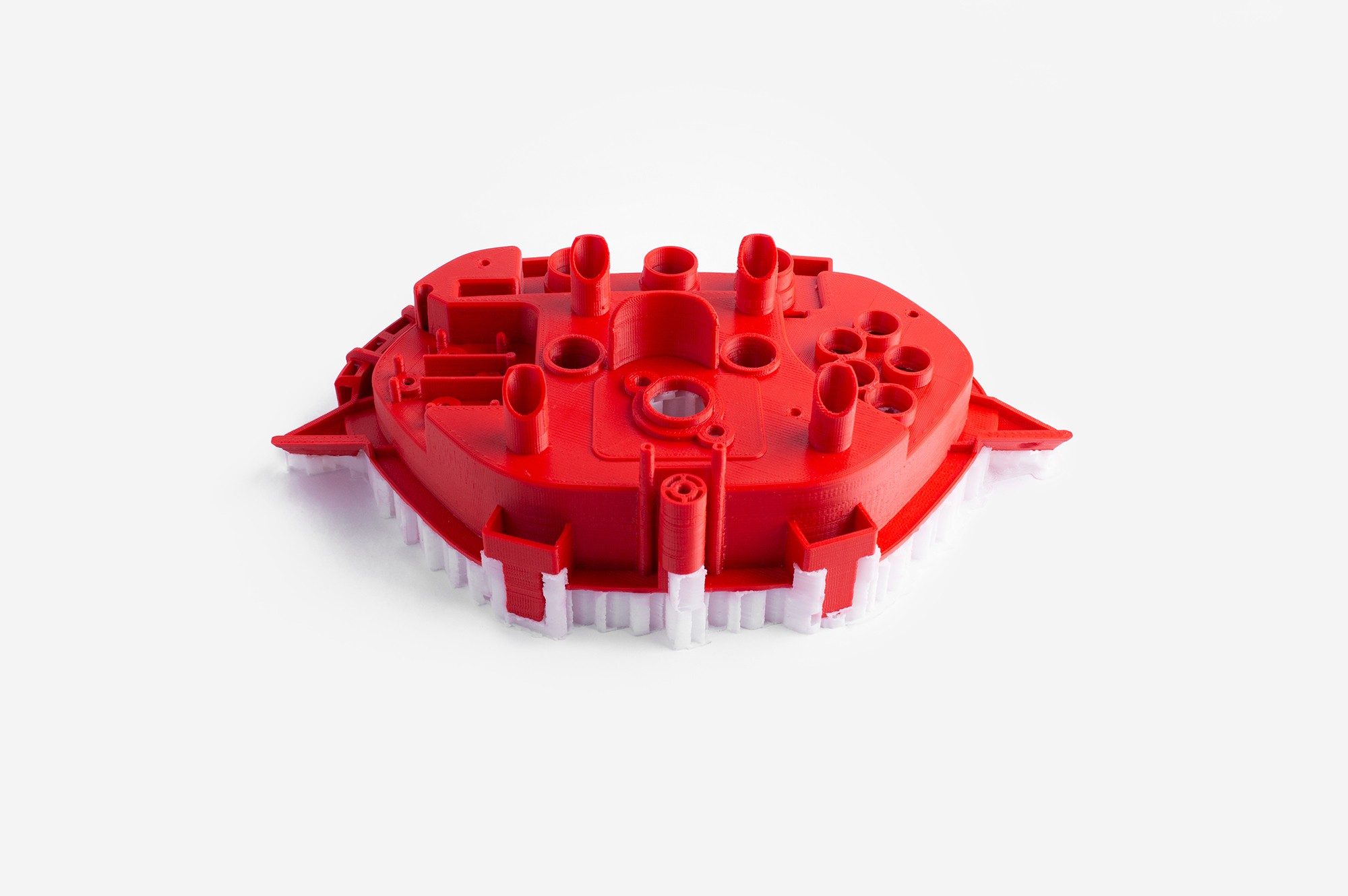
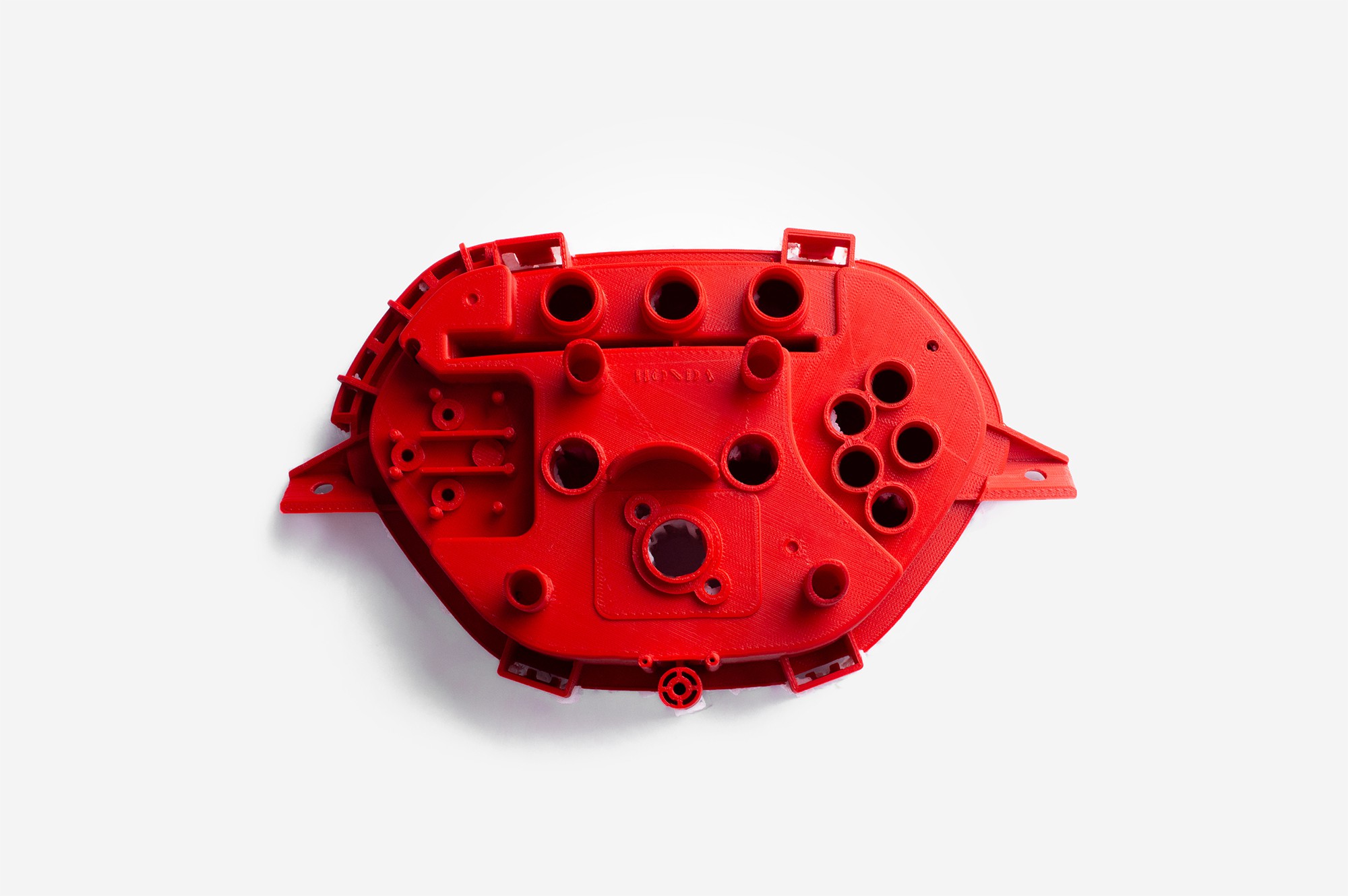
CARBON FILAMENT
One key distinction that needs to made is that Carbon filament is not the same as standard carbon fibre. Carbon filament is created by combining shorter carbon fibre with another common material like PetG which is then used to create the carbon filament spool. Despite this, the printed object still benefits from the strength properties while still remaining lightweight. It has improved tensile strength and can create really rigid parts.
One key note before printing is carbon filament requires the Bolt Pro NozzleX hot-ends which are abrasion resistant. Using standard nozzles will damage them and lead to clogging.
Material Properties
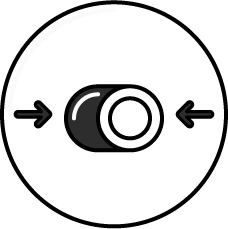
Strength
Carbon printed parts offer really high strength parts that are stiff and very rigid. These parts can be used with great effect for functional prototypes.

Lightweight
The added benefit of using carbon filament is in conjunction with the strength properties, parts are also extremely lightweight which opens up a wide range of use cases for engineering.

Impact Resistant
Parts produced with carbon filament have impact resistance which is comparable or even exceeds other printing materials in the market.

Durable and Heat Resistant
Unlike ABS and PLA, carbon printed parts have the additional benefit of being very abrasion resistant which offers longer lasting parts that look good and function well with great heat resistant.

Disadvantage
Carbon filament is abrasives and can clog and ruin non specialised nozzles.

Disadvantage
Carbon prints are an abrasive finish and cannot be post processed.
Material Specifications
Spool Information

200 mm

52 mm

54 mm

3mm
Filament Information

1.75 mm( ± 2%)

750 g

164 m

1.19 g/cm³
PRINTING CHECKLIST
Extrusion
Temperature
±230 ºC
Since the carbon filament is mixed with PETG, the print settings mostly reflect the same setup. One thing to be mindful is carbon can clog a lot and requires specialised metallic nozzles.
Bed Adhesion
Temperature
±70 ºC
Carbon has an average chance of warping during the printing process and requires the printing environment to be enclosed to maintain a constant temperature. The bed temperature settings are similar to PETG again as that is the base material in the filament spool and needs to be high enough to adhere properly to the build surface.
Bed
Adhesion
Options


Moisture & Storage
Storage of carbon requires it to be sealed and stored away from sunlight to uphold its quality.
Cooling
Carbon does not require cooling when printing.
Your First Layers
As with PETG, layer heights are highly dependent on the type of model that is being printed. This is mainly due to the combination of both materials that can create varying results during the printing process. Another matter to note is the size of the hot-end needs to be at least 0.4mm which is due to the carbon fibres that can build up with smaller nozzle sizes and create clogs during the printing process.
Speeds
Carbon prints work well with lower speeds and may not have the same fast speed settings that are available with filaments like ABS and PLA. This is mainly due to the fibres that can clog the extruder, especially if they build up.
Skirt / Brim
A skirt or brim is recommended when printing carbon
Support
Material
Breakaway support is recommended for carbon filament.
INDUSTRY EXAMPLE PRINT
TOOLING PRINT EXAMPLE
PP is very strong and durable plastic that has great fatigue resistant properties. For this model, we chose to print a compliant pliers designed by BYU CMU which operates without the use of multiple parts to create a functional tool or part. This is a great use case for PP because it has great wear and tear resistance and can be both ductile and more stiff when printed with higher infill to create a wide range of different parts.
3D MODEL
FINAL PRINT
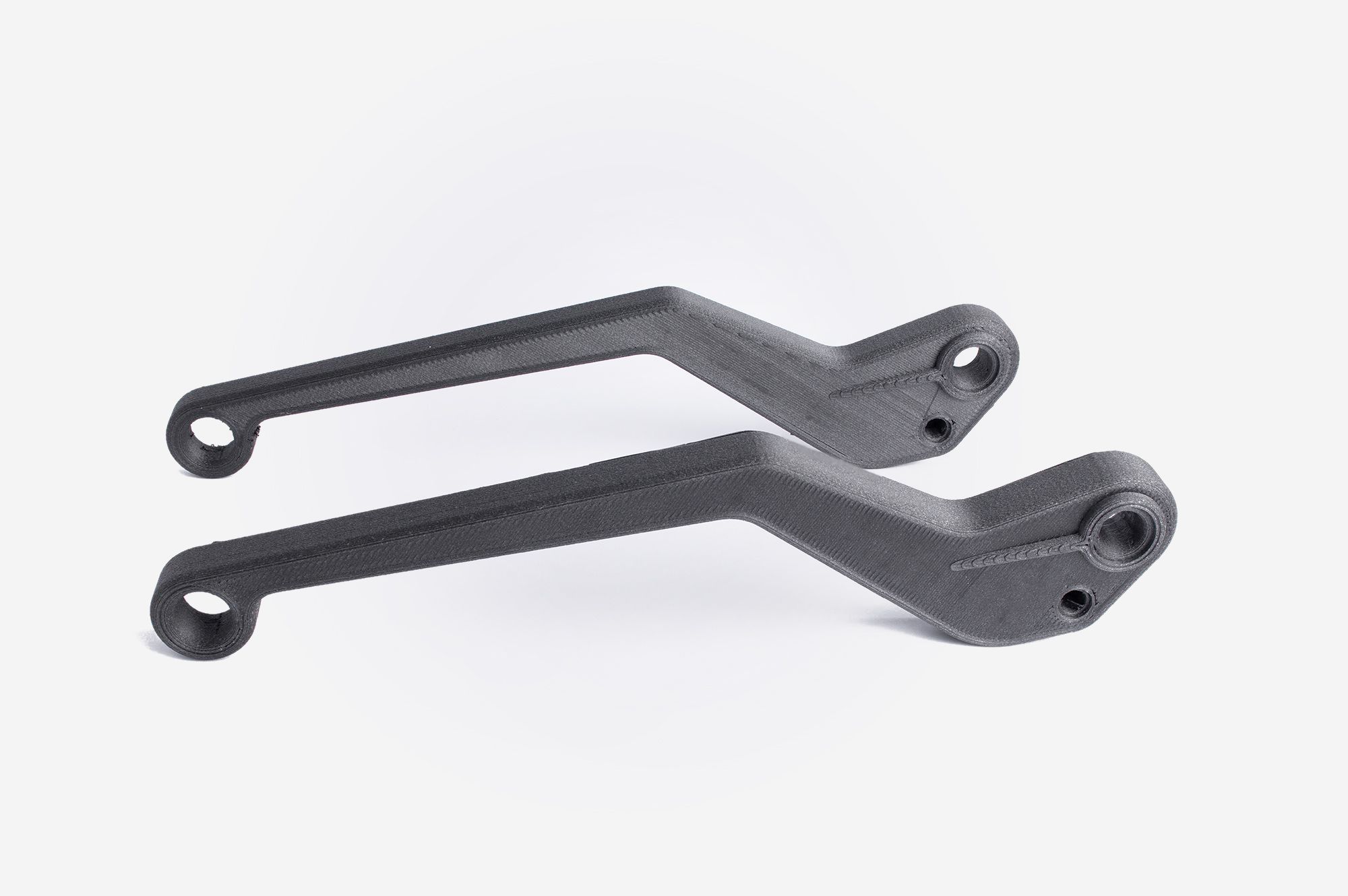
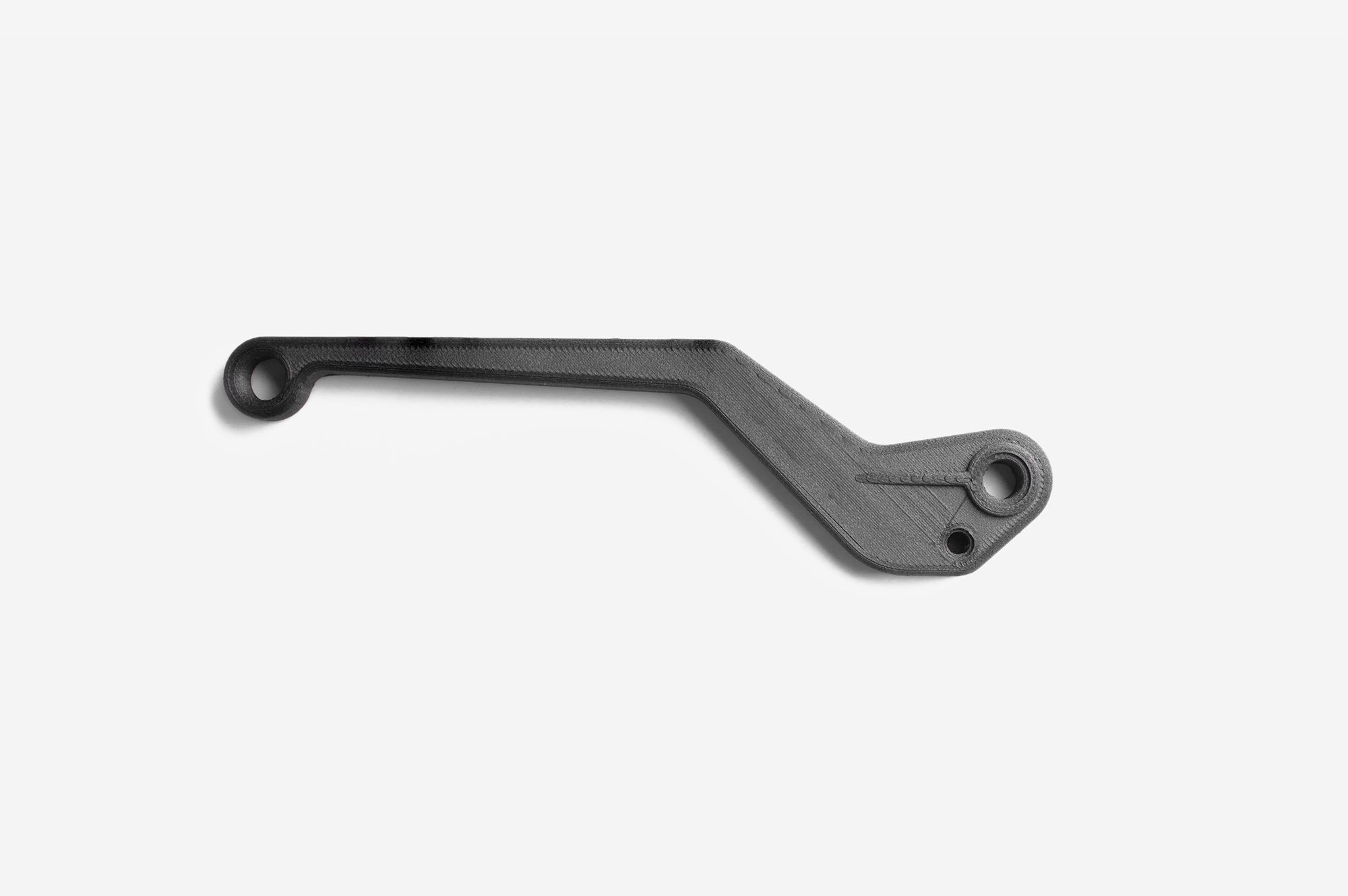
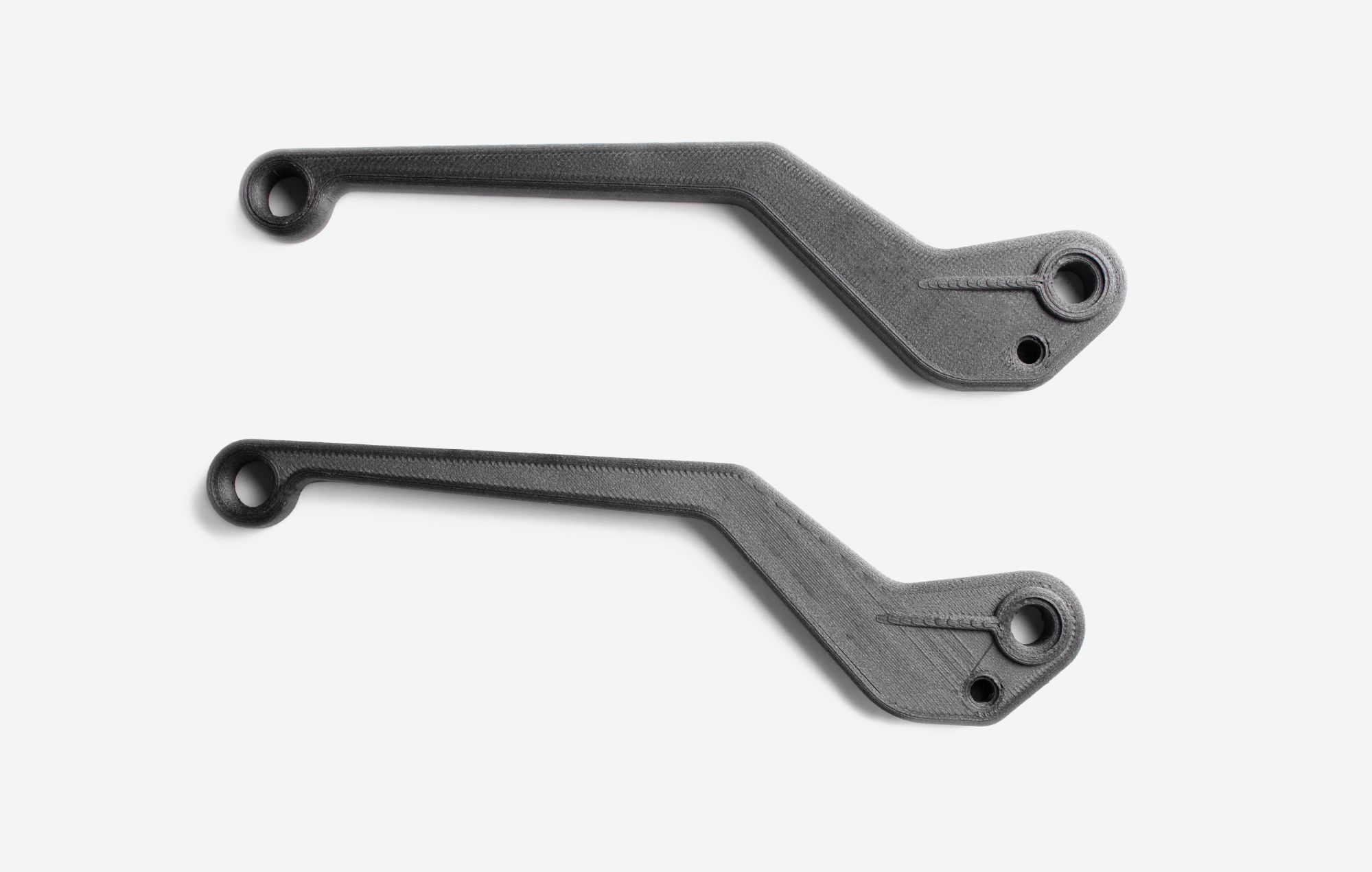
Share on facebook
Share on twitter
Share on linkedin
NEWSLETTER
Subscribe to our weekly newsletter for useful tips and valuable resources.

